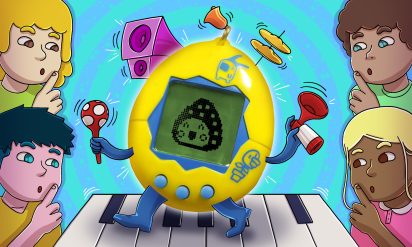
March 4, 2025
How to Turn Off Tamagotchi Sound for Peace & Quiet
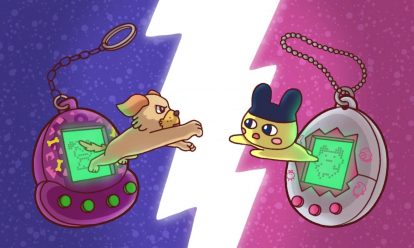
August 31, 2024
Virtual Pet Showdown: Giga Pet Vs. Tamagotchi
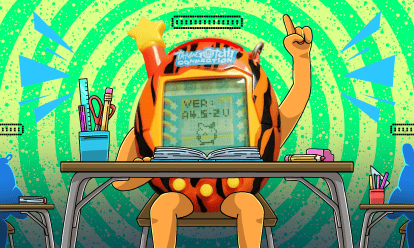
March 26, 2025
How to Discipline Your Tamagotchi: Tough Love the Virtual Way
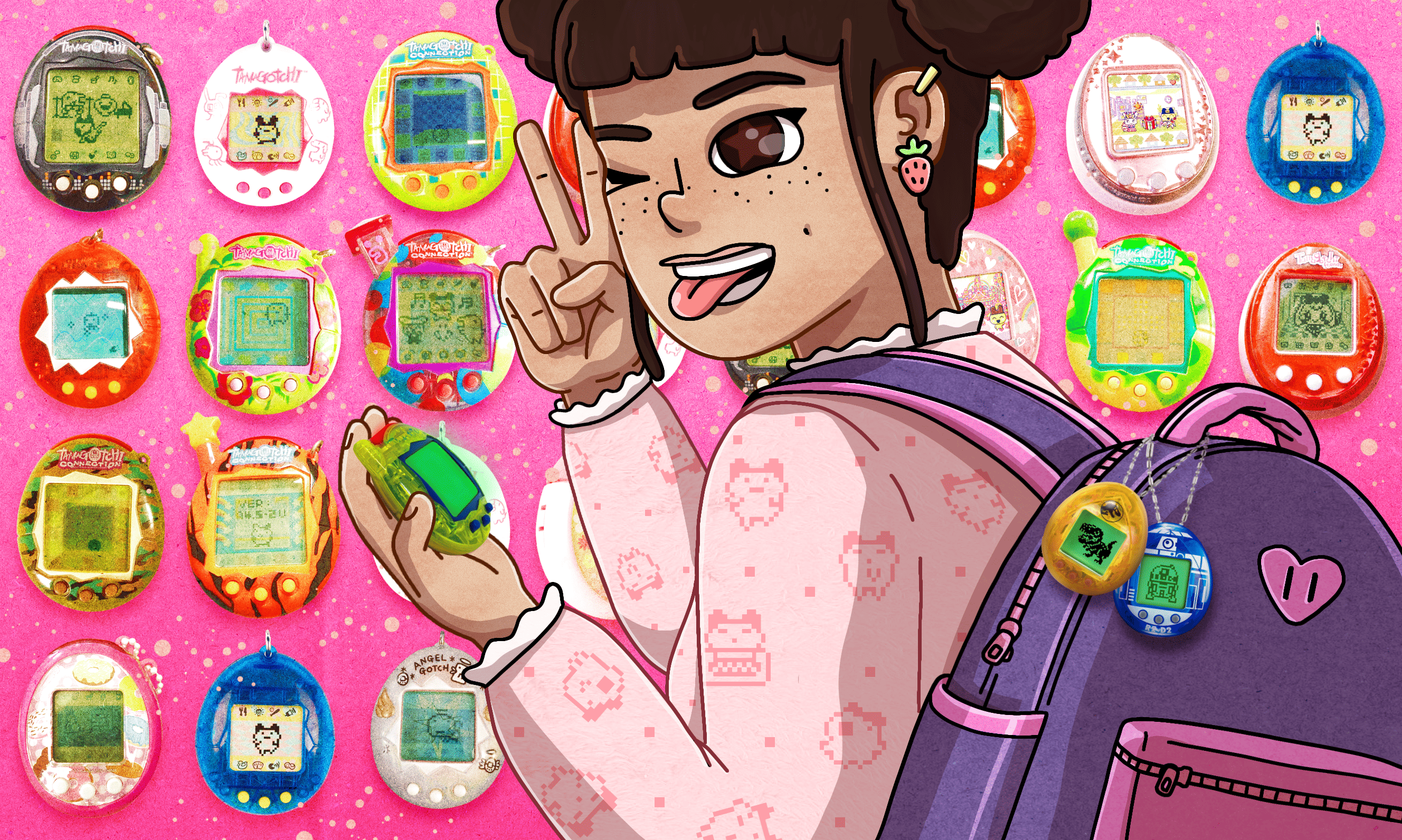
The popularity of Tamagotchis may have peaked in the late 90s, but they’re still beeping and evolving to this day! In fact, more than thirty handheld Tamagotchis have been released between 1996-2023, with each version trying to reinvent the classic Tama formula with unique designs, gameplay features, and more. So, have your candy bag and poop scoop ready as we explore through all the different types of Tamagotchis.
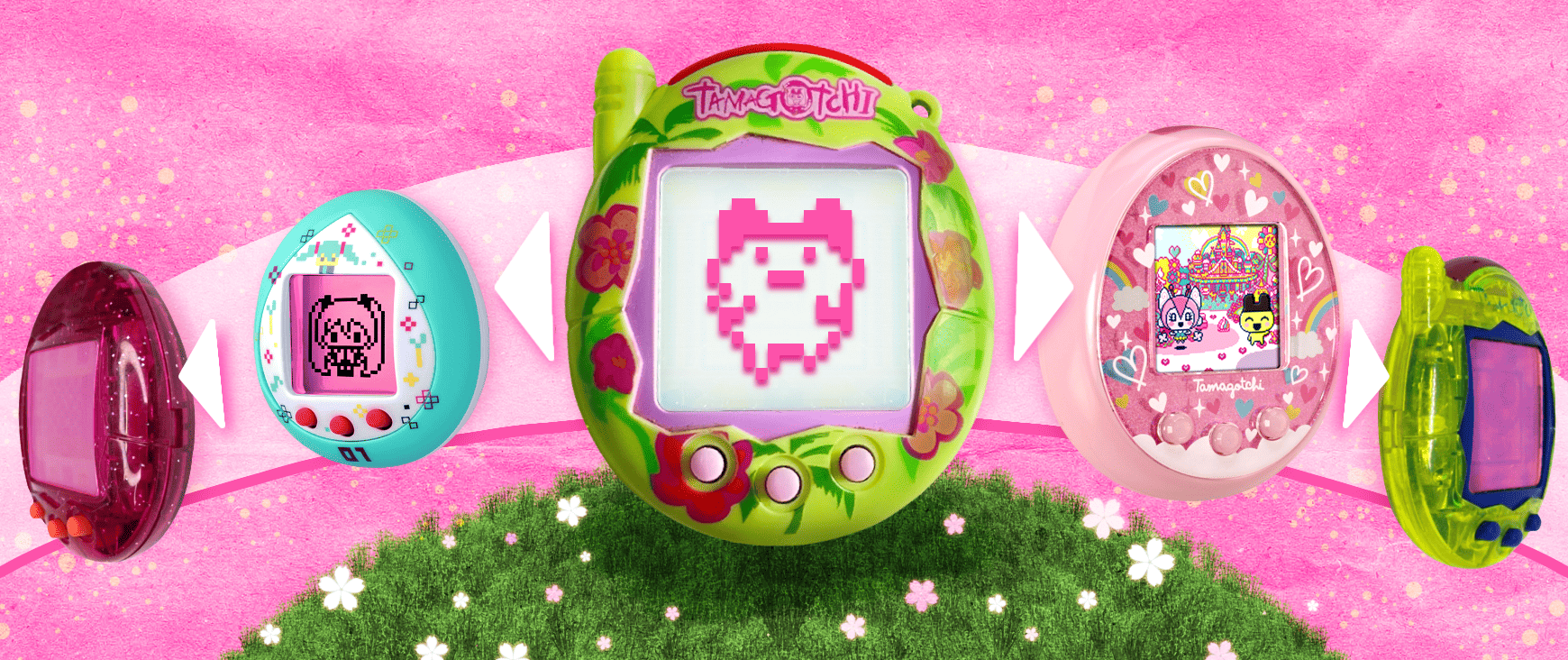
If you were a 90s kid, chances are you played with a Gen1 or Gen2 Tamagotchi before moving on to the next big toy. But for the die-hard fans, there’s a world beyond with 36 globally-released versions of Tamagotchi to explore. Japan, where the toy was developed, has even more exclusive releases.
The history of Tamagotchi is fascinating, and it’s not just limited to the iconic egg-shaped toy. There are versions for gaming systems, smart devices, apps, and online, offering a different experience than the original toy. The range of Tamagotchis available is truly exhaustive!

With nearly 30 years of Tamagotchi releases, there’s been no shortage of innovations as technology and consumer trends have changed. In contrast to the toy’s humble beginnings, where all you had to do was take care of your Tama’s basic needs, newer versions introduced all kinds of features to expand the gameplay – allowing your Tama to learn talents, build a family, and do more and more “human-like” things.
Here are the 18 mainline Tamagotchi versions released to date:
The Tamagotchi Gen 1 was a global sensation, selling 10 million units in its first year. However, its popularity came with consequences. Some schools banned it because kids couldn’t stop obsessing over their virtual pets, causing distractions during class. After all, who wanted to be the kid whose Tamagotchi died at school?
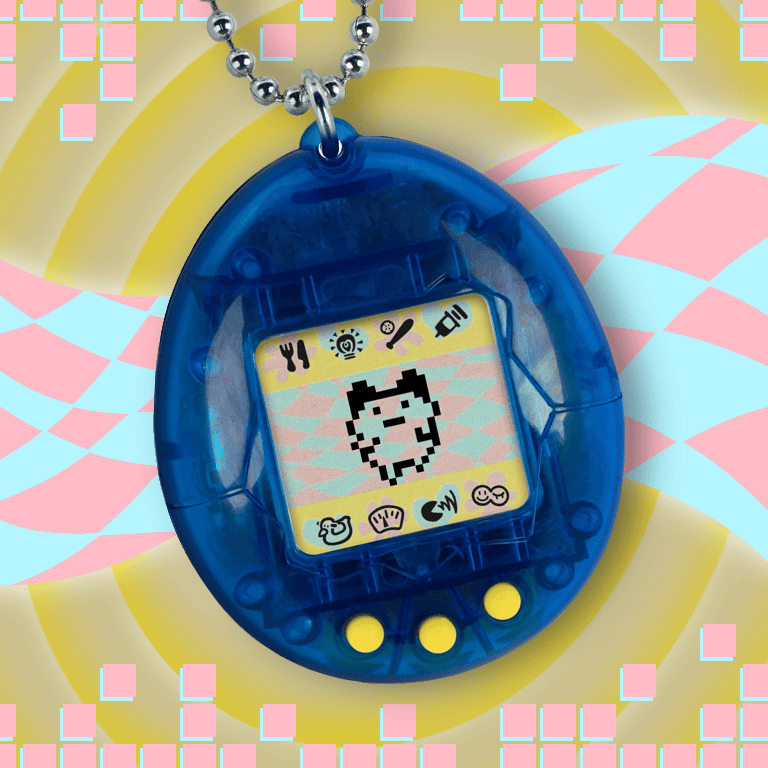
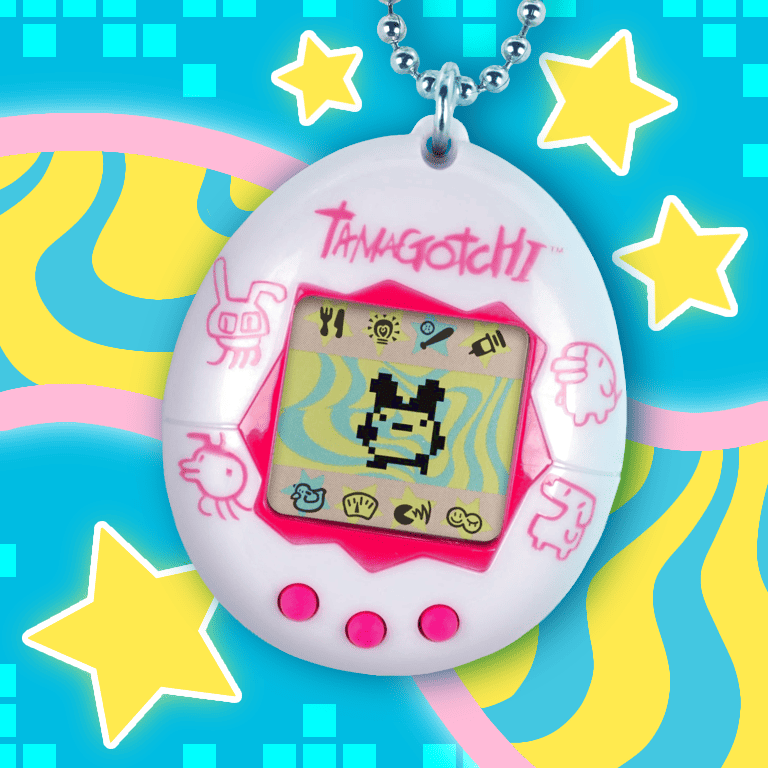
For Gen 2, Bandai America changed the Tamagotchi’s ending display to be a bit less traumatic. Instead of the sad angelic farewell, Bandai tapped into their otherworldly origins and transformed the poignant angelic farewell into a captivating spaceship send-off.
Still, we’re sure some kids felt their Tamagotchi abandoning them to live on another planet just as harshly.
The Tamagotchi Angel introduced a touchscreen and a motion/sound sensor for increased interactivity. By making noise or tapping the shell/screen, the sensor would activate. The Tamagotchi Angel also had a unique backstory where each Angel represented a deceased Tamagotchi spirit. Players had to encourage good deeds to prevent them from becoming “Deviltchi” bullies.
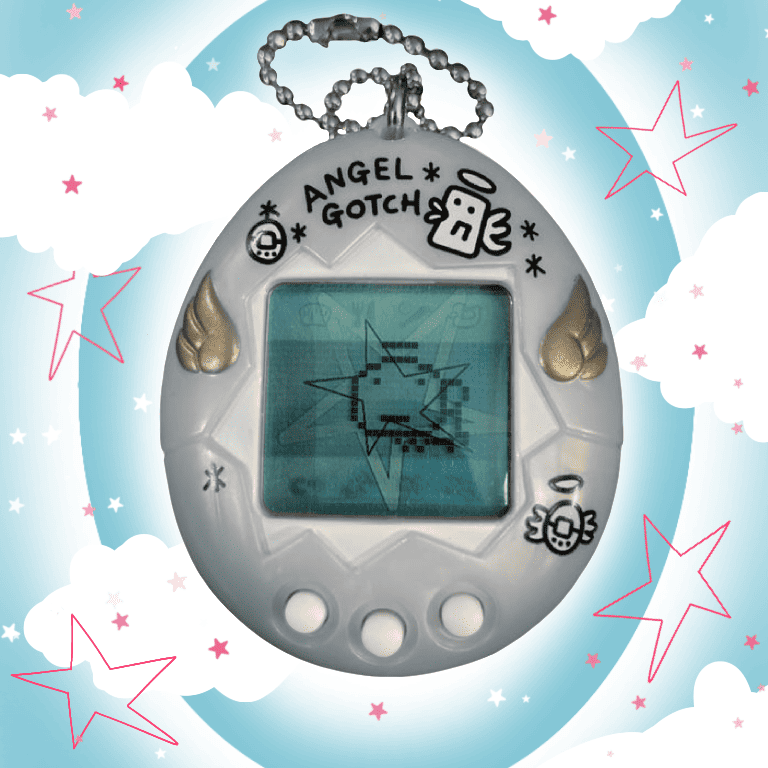
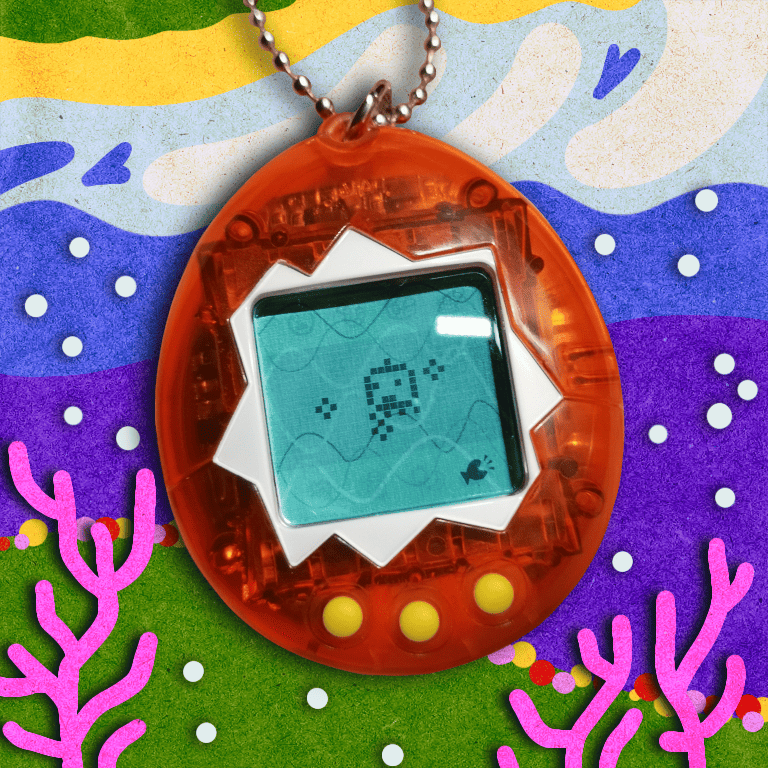
Tamagotchi Ocean, or Umi de Hakken (discovered in the ocean), is set in a 3,720,000 km deep ocean made of juice and soda water (of course). It features an entire activity center on the ocean floor where players can (randomly) export pickled daikon beets and launch explorations to three islands. The Tamagotchis in this version, called “Sakanatchi,” are challenging to raise, making Tamagotchi Ocean the toughest vintage release.
Tamagotchi Connection rebooted the original version and introduced infrared technology for connecting and interacting with other Tamagotchi pets. This allowed Tamagotchis to exchange gifts, play games, and even have relationships, resulting in… baby Tamagotchis.
That’s right; your Tamagotchi could now date and have children with your friend’s Tamagotchi! And no need to worry about custody disputes since you both get a baby of the same gender.
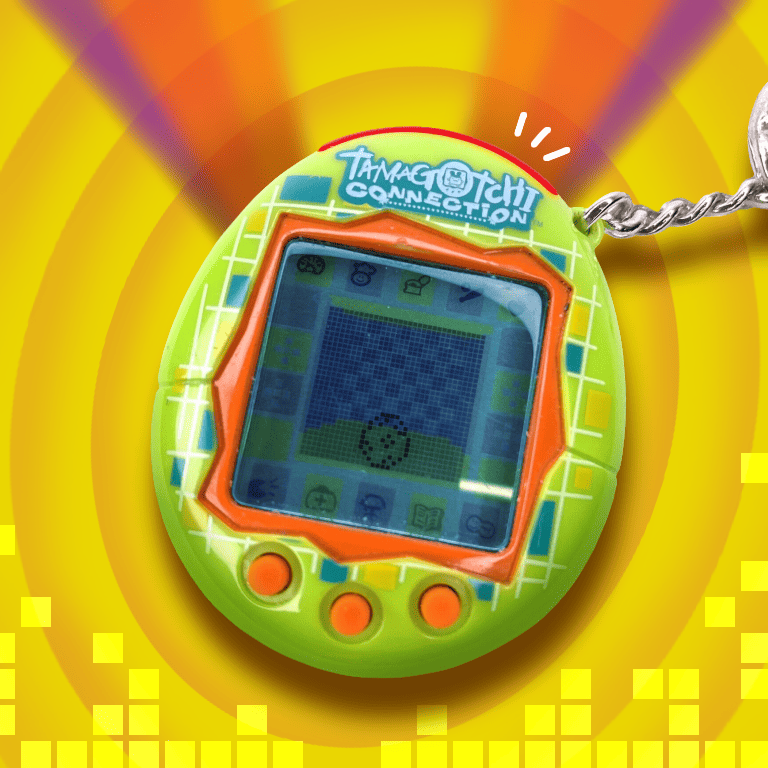
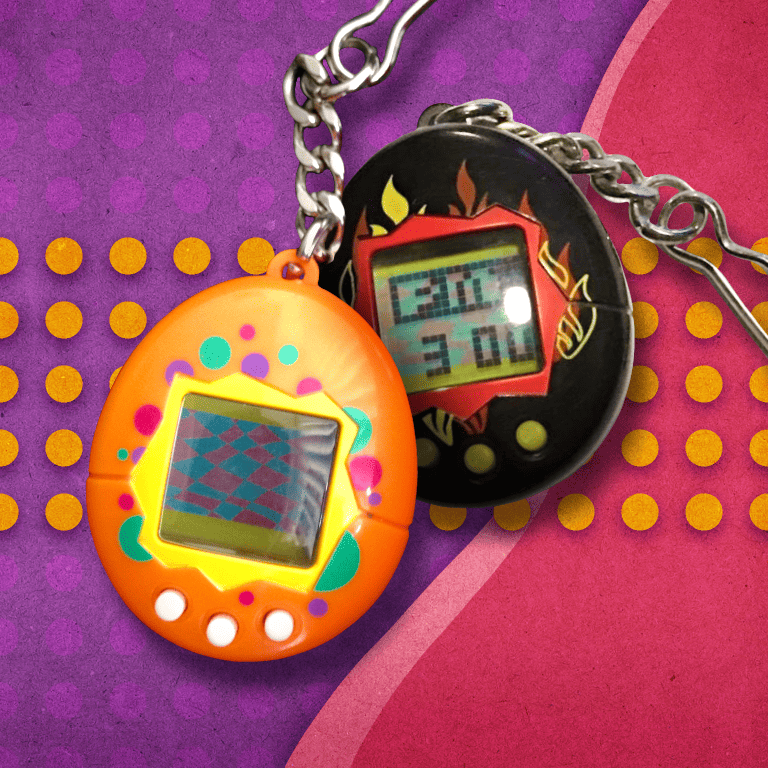
The Tamagotchi Mini was a part of the Tamagotchi’s 20th Anniversary celebration. The Mini was so small (1.57 inches) that it was used as a fashion accessory on backpacks, purses, cell phones, keychains, etc.
The Tamagotchi Mini briefly rekindled the schoolyard obsession with Tamagotchis (much to the dismay of educators). However, the fad was only a shadow of what the Tamagotchis achieved in the late 90s.
V2 featured four new unlockable games and introduced “Gotchi Points” as in-game currency for purchasing items. The shop offered a range of snacks like cheesecake, apple pie, cupcakes, and tacos. Each Tamagotchi species had specific food preferences, so choosing the right treat was important. For example, Hitodetchi loved pineapple, while Kiwitchi despised it (even on pizza).
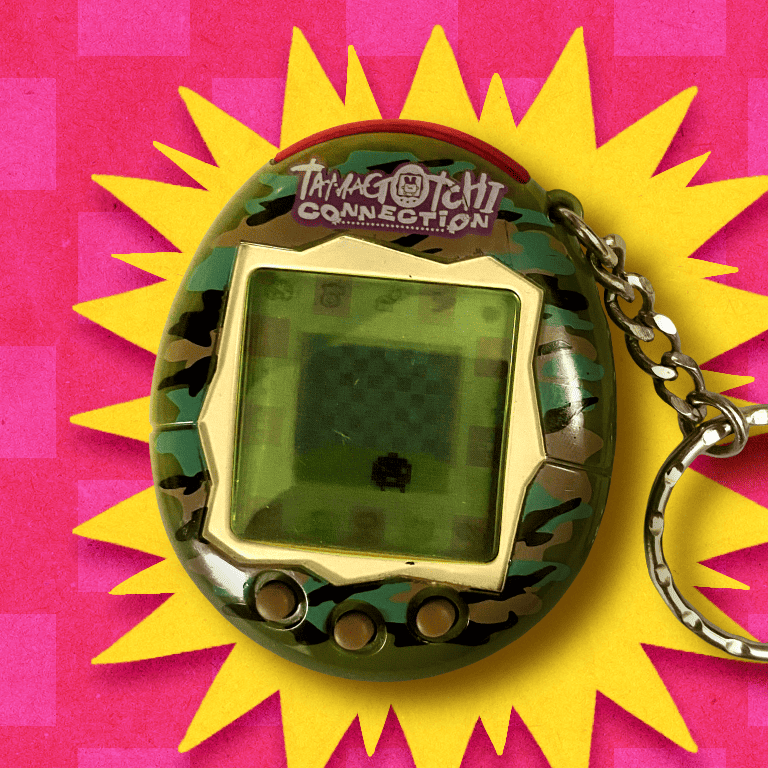
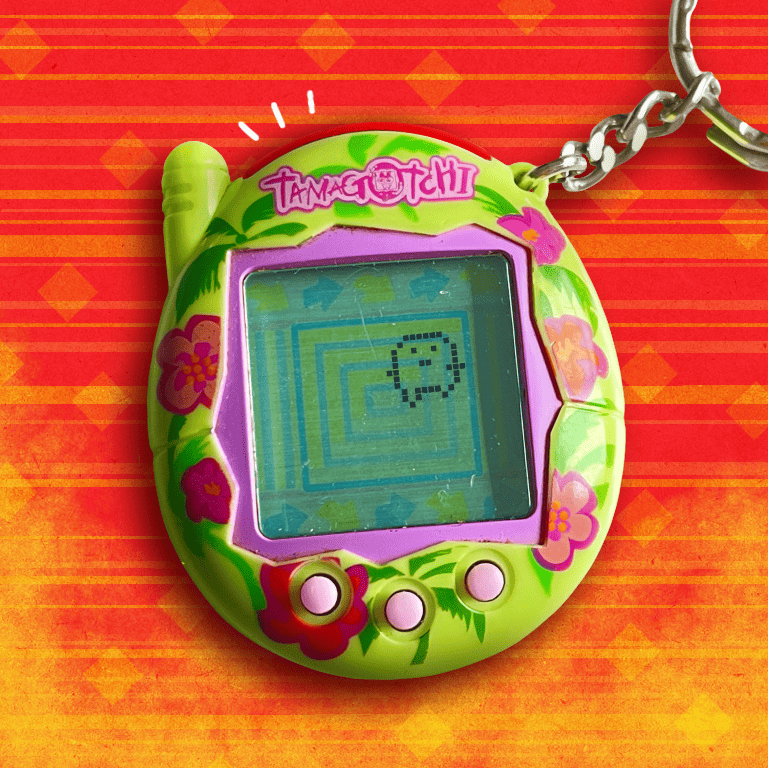
V3 introduced more Tamas than all the previous versions, bringing the grand total to 52! It also introduced secret codes, found under the Games menu, which can be used to obtain souvenirs from the now-defunct Tamatown.
V4 introduced even more connection options, like allowing your virtual pet to now go to school or work (joy!) This version still maintained several features from previous versions, like Tamatown access, mail, shopping, and points.
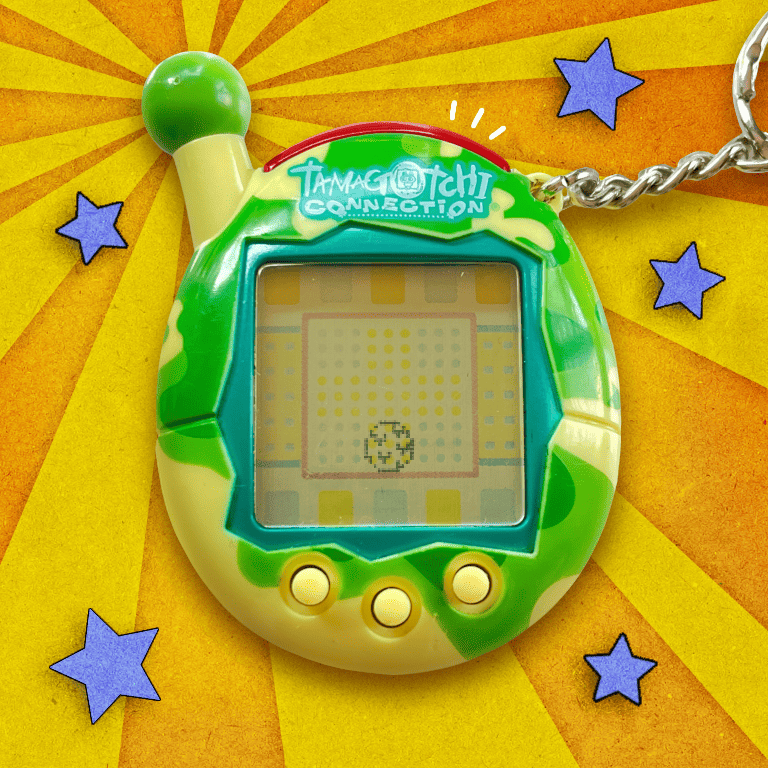
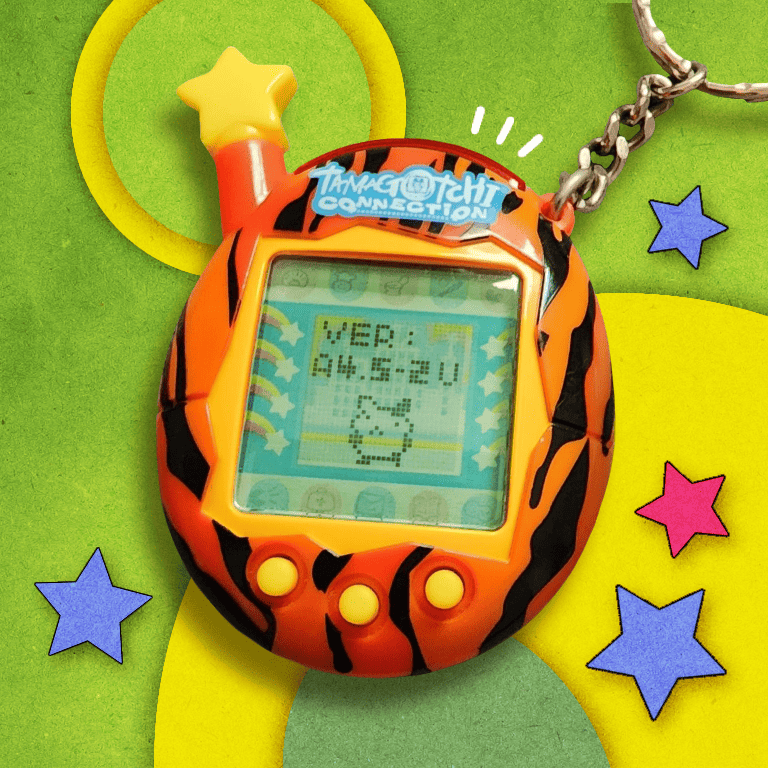
As the version number suggests, V4.5 was only a slight upgrade from V4, featuring new characters, jobs, souvenirs, items, and games.
In a Tamagotchi first, a special “PC Pack” was released the same year with a tree-shaped microphone, mousepad, CD ROM, and an exclusive V4.5 device made to represent a globe.
The CD-ROM contained a voice-activated Tamagotchi game, showcasing innovative voice technology ahead of its time.
They just can’t stop making Tamagotchi Connections, can they? V5 (Famitama) emphasizes family dynamics. Players can strengthen bonds through training, playing games with parents, and using specific items. The level of bonding, indicated in increments of 10%, affects the characters’ daily animations. At lower levels, Tamas ignore each other, while at 60-70%, they share a sweet kiss with hearts floating above. Cute!
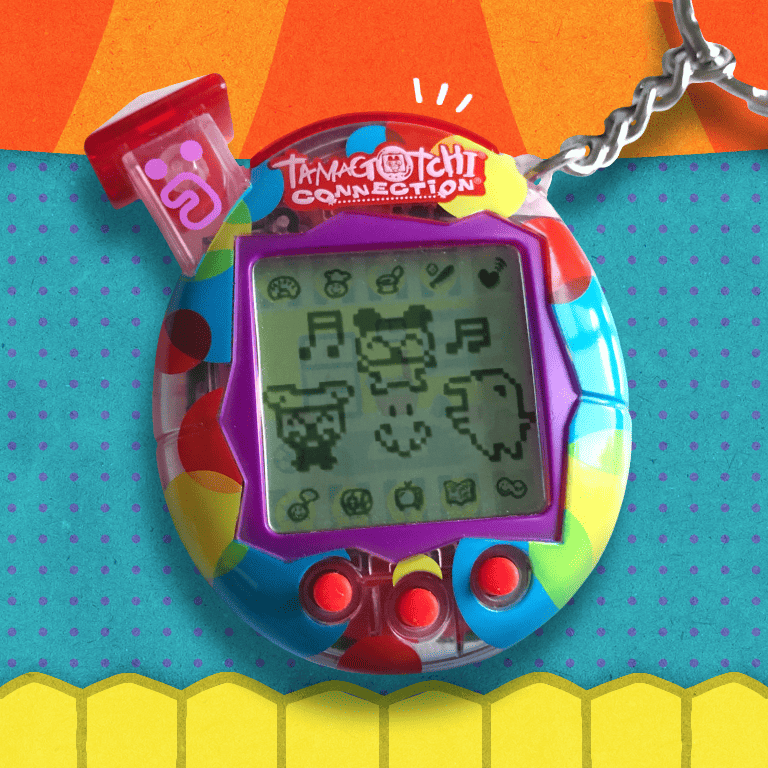
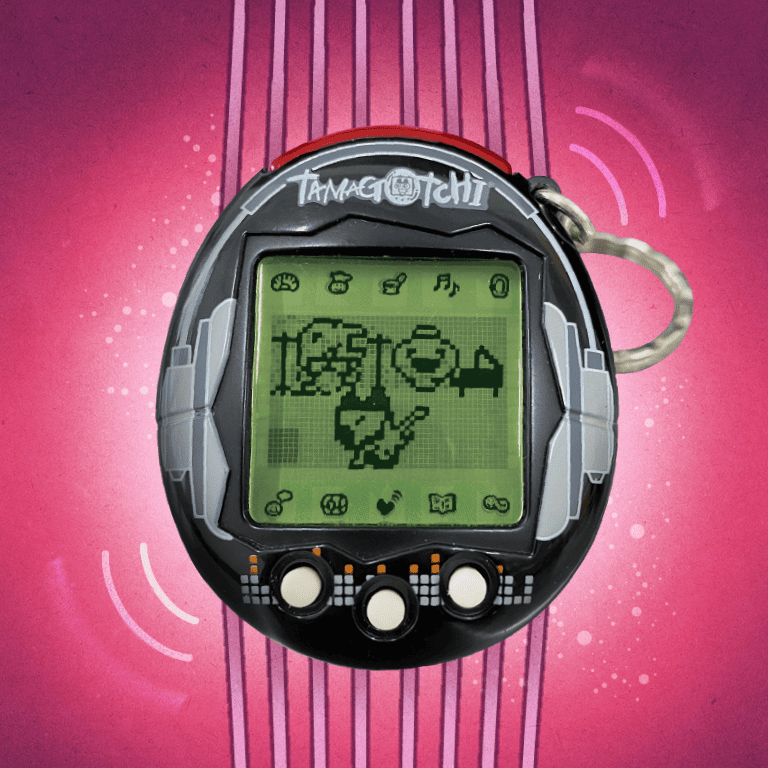
Tamagotchi Music Star, also known as V6, concludes the Tamagotchi Connection series with a music-themed experience. The Tama’s egg hatches with the help of a musical instrument. Playing games boosts Rhythm, Tone, and Original points, impacting the character’s music career. They can take music exams and perform concerts in eight genres: Latin, Rock ‘n’ Roll, Classical, R&B, Jazz, Hip Hop, Asian, and Pop.
Colloquially known as Tamagotchi Connection Version 7 amongst fans, TamaTown Tama-Go, combines features from Tamagotchi Music Star and Tamagotchi Plus Color. It introduces a 3D background and a 4-part grayscale feature. The notable addition is Gotchi Figures, small figurines that attach to the toy’s top. Each Gotchi Figure unlocks different shops, items, and games in TamaTown.
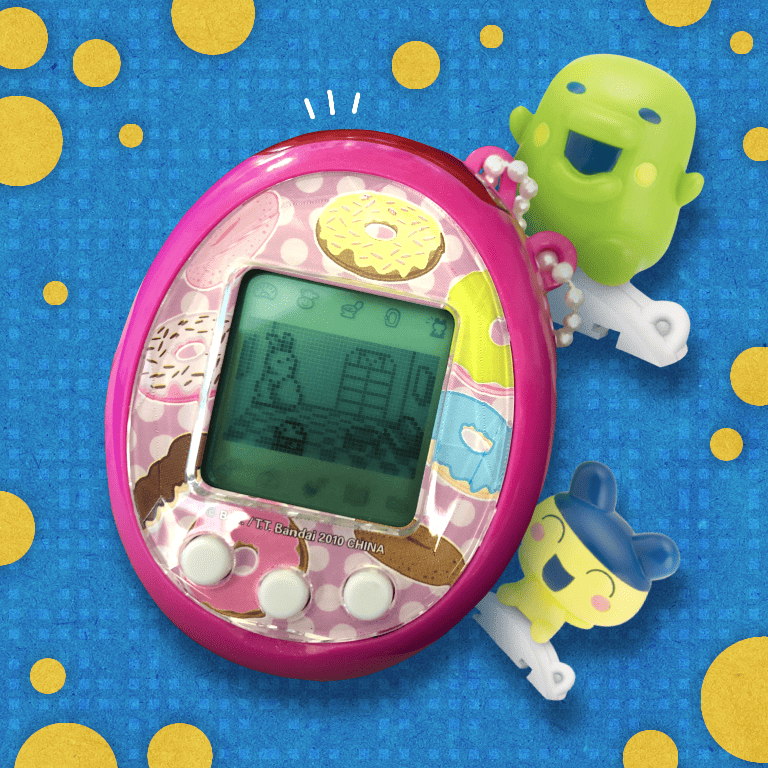
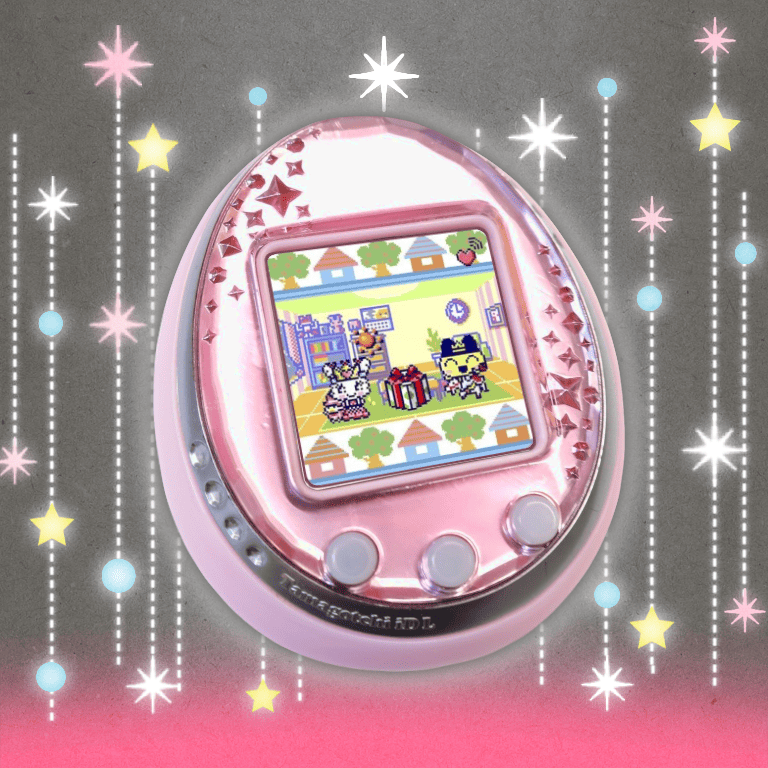
The Tamagotchi iDL draws inspiration from the Tamagotchi! anime that aired until 2014. The “L” in the title represents Link, Live, Love, Life, Leader, and Limited. It holds the distinction of being the only globally released Tamagotchi featured in the opening song and eyecatches of seasons 6 and 7 of the anime.
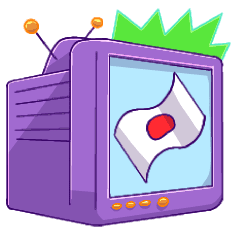
Fact
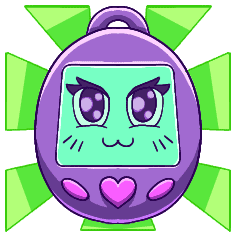
Eyecatches are brief illustrations or scenes that mark the start and end of commercial breaks in many Japanese shows and anime.
Tamagotchi Friends became the ultimate multiplayer version of Tamagotchi, making it much more convenient to play with friends. Its standout feature was NFC (near-field communication), replacing outdated infrared technology. NFC-enabled Tamagotchis could reliably interact by touching back to back.
The inclusion of the “BFF meter” measured the friendship level between two Tamas. Certain games and activities required reaching a specific threshold on the BFF meter, which, when you think about it, isn’t too different from real life!
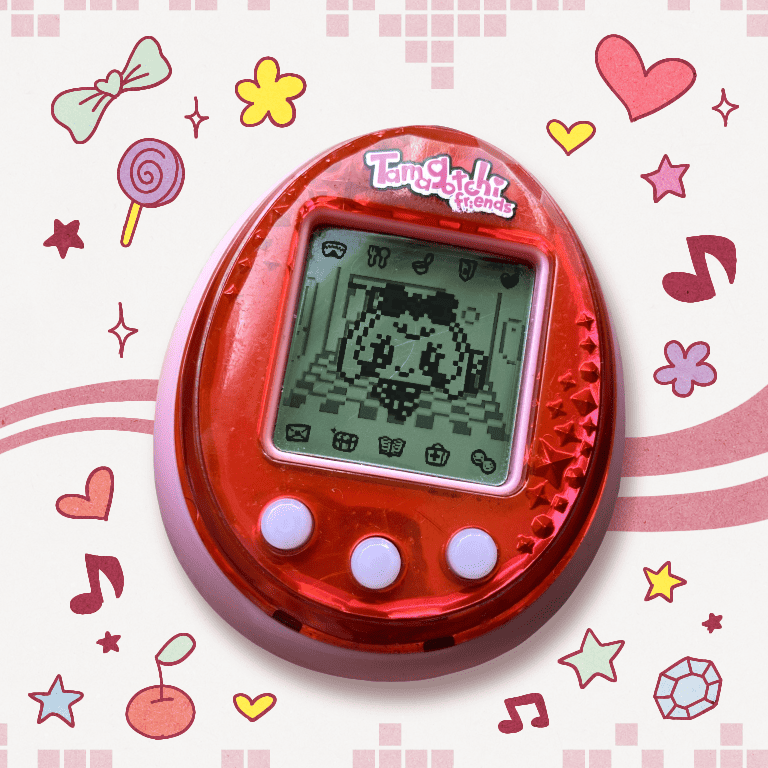
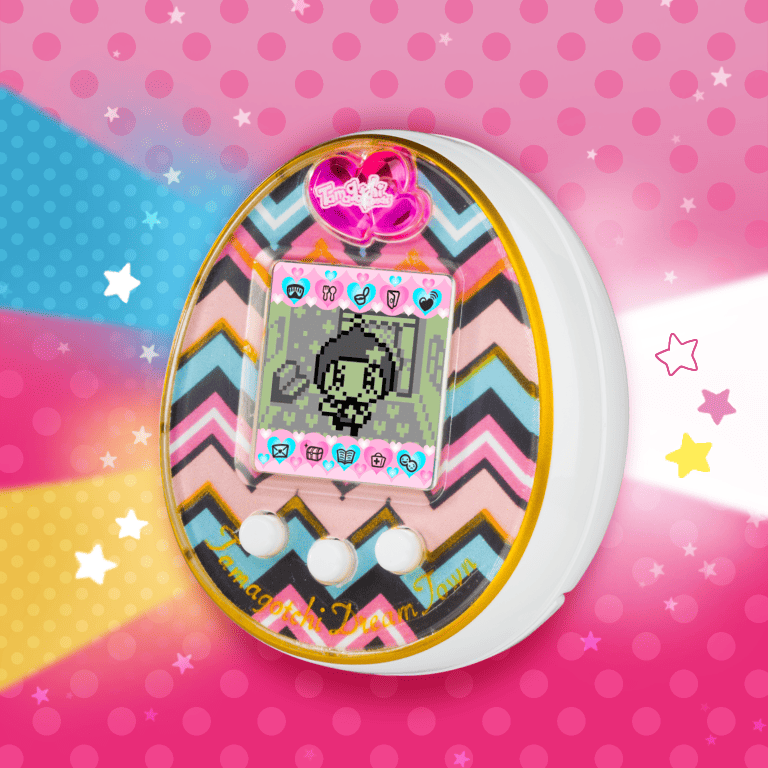
Dream Town Digital Friend, a decent update to Tamagotchi Friends, adds five new Tama-tastic characters and awesome features (by 2015 standards). In addition to the NFC, you can text message too! Another favorite part of this version is the skill system. Your adult Tama character is determined by the character’s most attended class in Dream School and which unique set of seven skills you develop.
Tamagotchi On, a follow-up to the Japan only Tamagotchi Mix, retains similar functions while introducing fresh characters and features. It incorporates a unique top port and supports Bluetooth and infrared connectivity. One cool addition is Tama Pets, allowing your pet to have its own pet (because your pet defs needs a pet). These Tama Pets can have mixed offspring with each other, expanding the genetic possibilities in this virtual world.
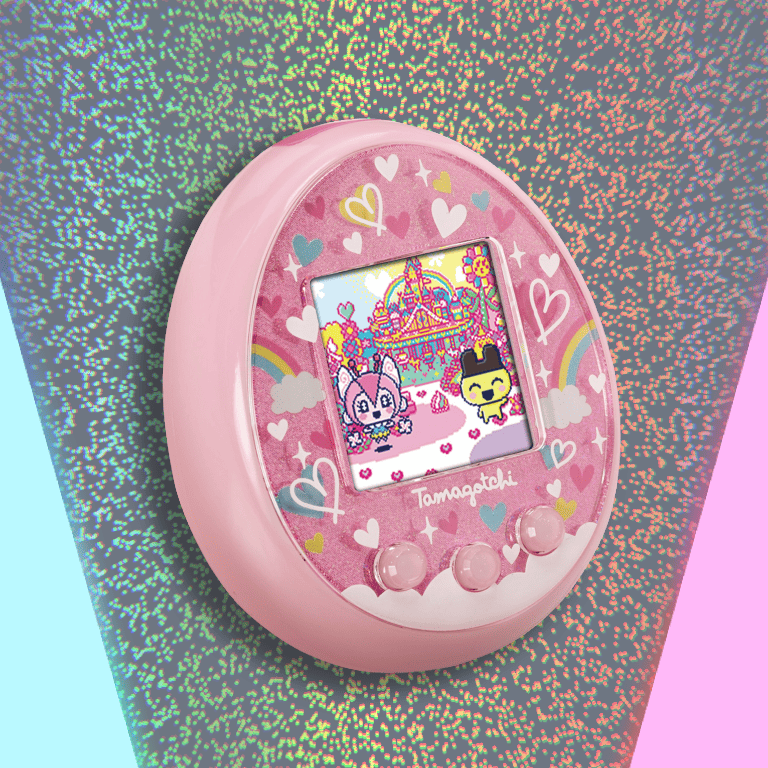
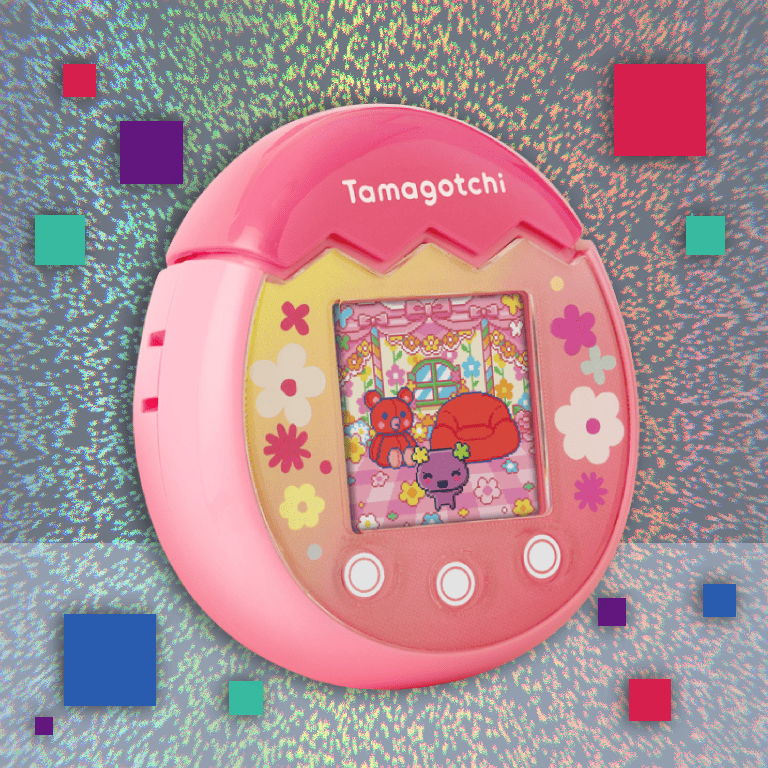
Tamagotchi Pix, designed exclusively for an international audience, marked the first Tamagotchi release that didn’t launch in Japan. This version boasts a vibrant color screen and includes a camera capable of detecting colors for in-game interactions. Hold down the top of the shell to take a screenshot!
These pixelated pals have teamed up with your favorite franchises, bringing a whole new level of fandom to the virtual pet experience.
Gudetama Tamagotchi is just one of the many licensed Tamagotchis that showcases beloved characters. This particular version is a nano Tamagotchi inspired by the famous Sanrio character, Gudetama. What sets this edition apart from previous nano Tamagotchis is its higher pixel resolution of 30 x 24, which establishes a new standard for future nano versions.
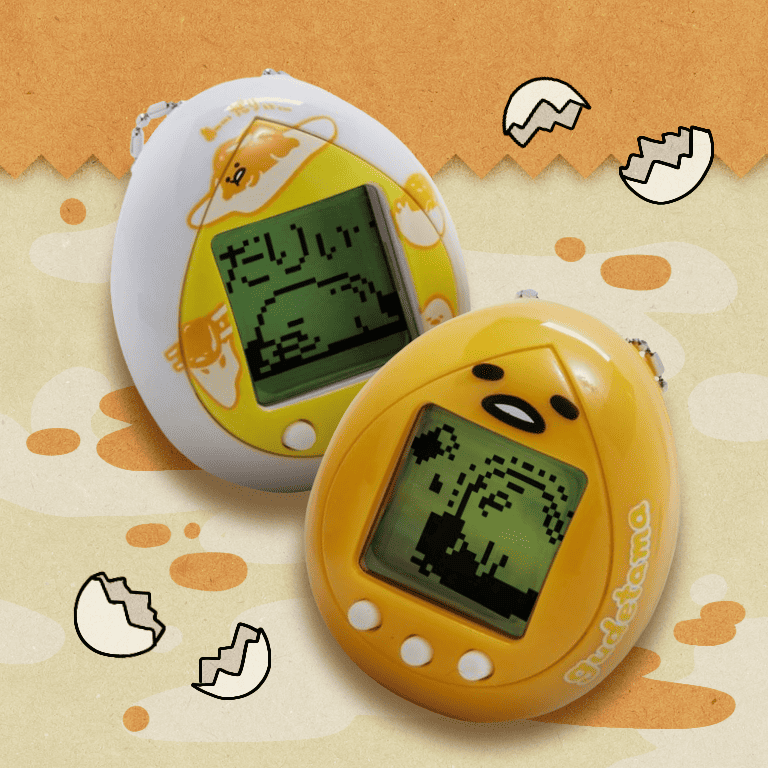
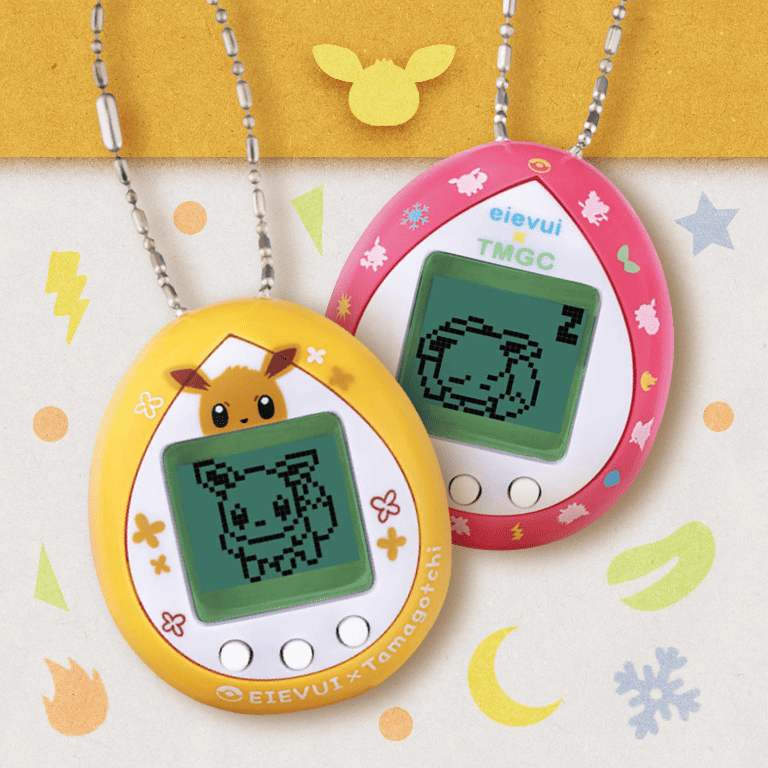
Eevee X Tamagotchi, the third ever licensed Tamagotchi featuring the beloved Pokémon character Eevee, brings together two iconic franchises. With Pokémon being the highest-grossing media franchise worldwide, earning a staggering $118.5+ billion, the collaboration with Tamagotchi is a match made in virtual pet heaven. Similar to other nano Tamagotchis, this version offers compact gameplay. However, what sets it apart is the inclusion of two mini-games: Berry Get and Dance.
Evatchi, also known as the Multipurpose Egg-Shaped Decisive Weapon Evatchi, is a licensed Tamagotchi nano based on the iconic anime series Neon Genesis Evangelion. The USA release retained the original Japanese design, programming, and packaging. Instructions in English are available on Bandai’s website.
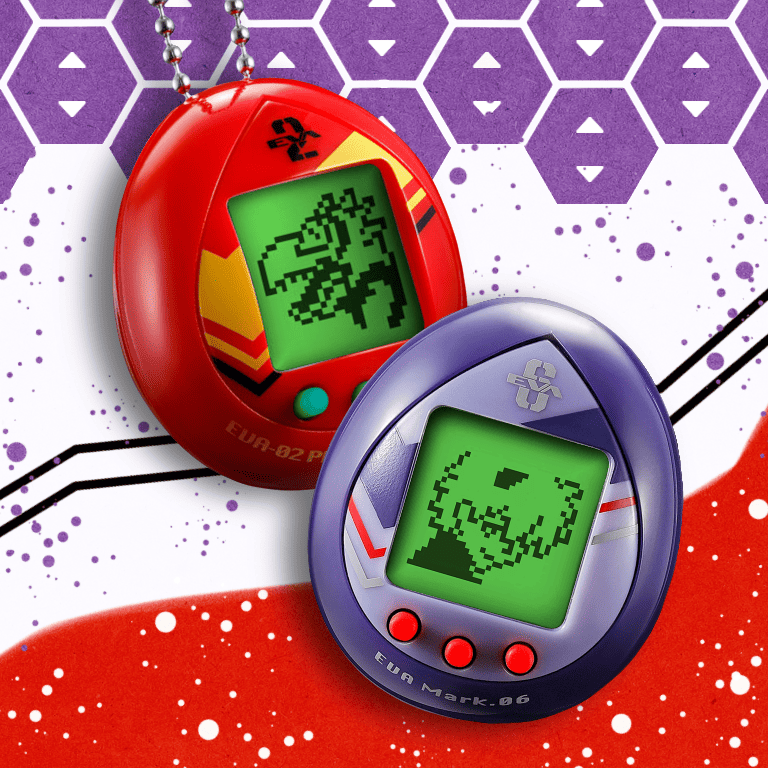
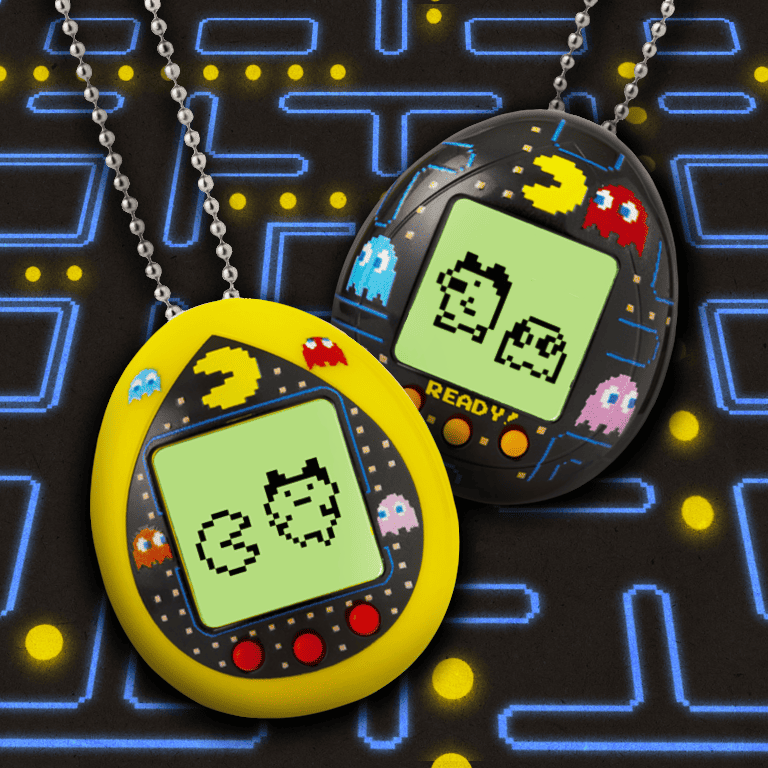
PAC-Man Tamagotchi was the first English-exclusive Tamagotchi nano. This collaboration of Bandai Namco franchises released on the titular character’s 40th anniversary. This Tamagotchi nano even featured a version of the original PAC-Man game.
The Hello Kitty Tamagotchi is the second licensed Tamagotchi nano in collaboration with Sanrio, featuring its most beloved character, Hello Kitty. It’s the second English-exclusive Tamagotchi nano model after PAC-Man, and the first Tamagotchi to include alternate sprites for character direction. With how cute and small Hello Kitty is, it was only a matter of time until she got a Tamagotchi!
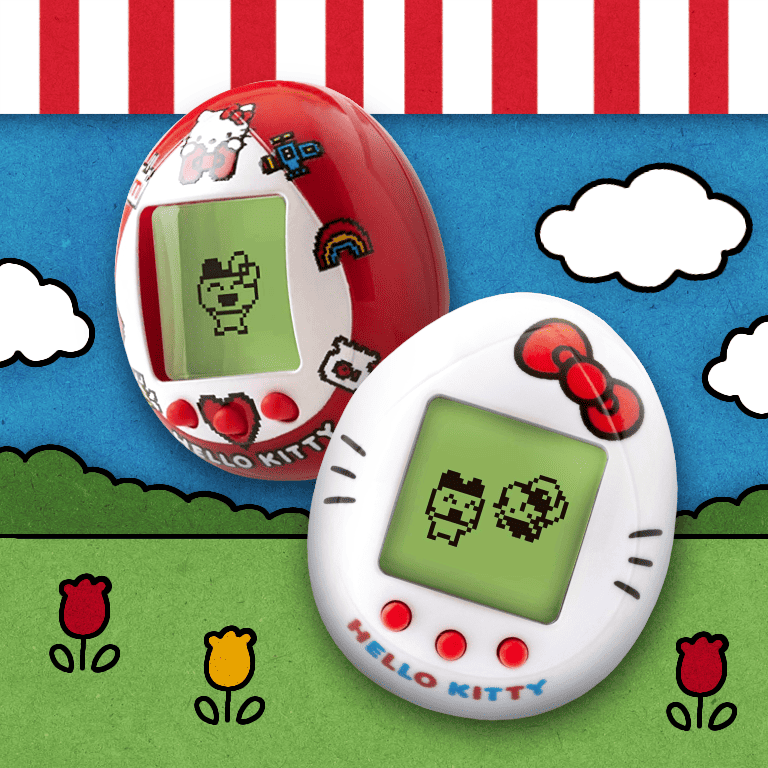
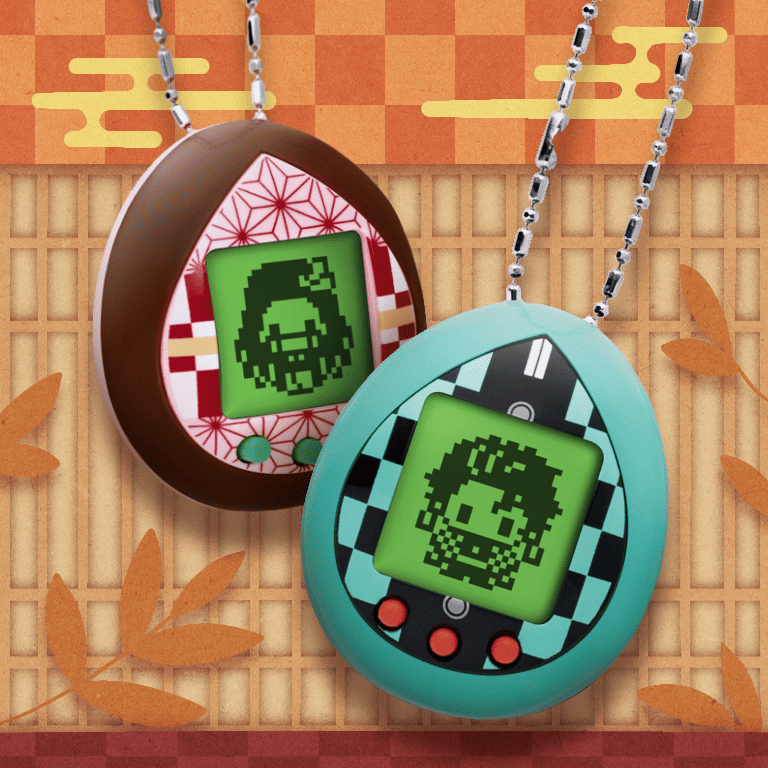
Based on the anime and manga franchise Demon Slayer: Kimetsu no Yaiba, the Demon Slayer Tamagotchi was released as a Tamagotchi nano. It comes in three versions, each with its own characters, animations, and demons that can attack the virtual pet (this has to be the most intense Tamagotchi yet!)
Kamen Riderthci was released on the 50th anniversary of the television show Kamen Rider. With a roster of 40 Tamas, this nano has more characters than any other version. It’s also the first nano model with a completely metallic-colored shell. Shiny!
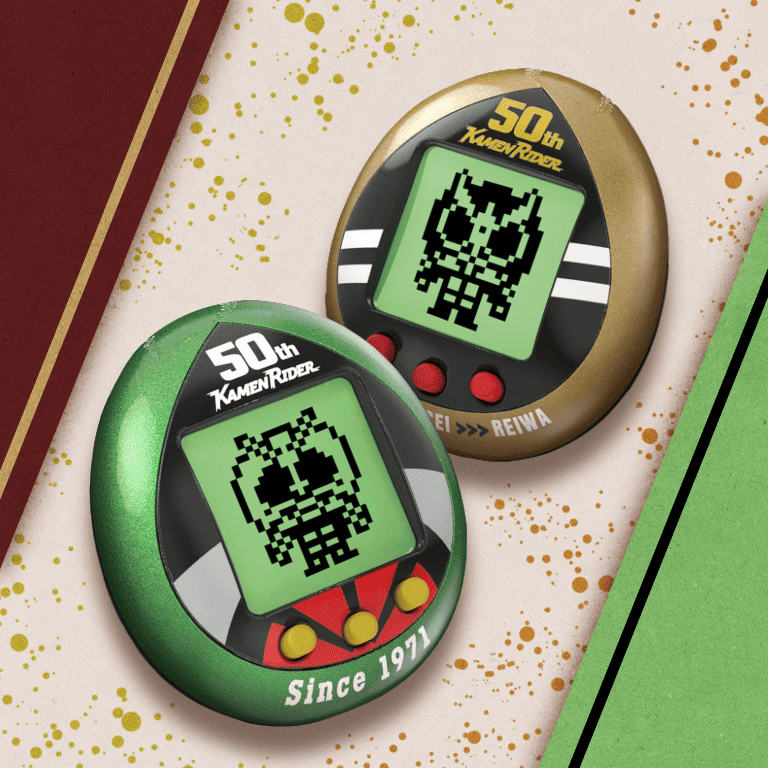
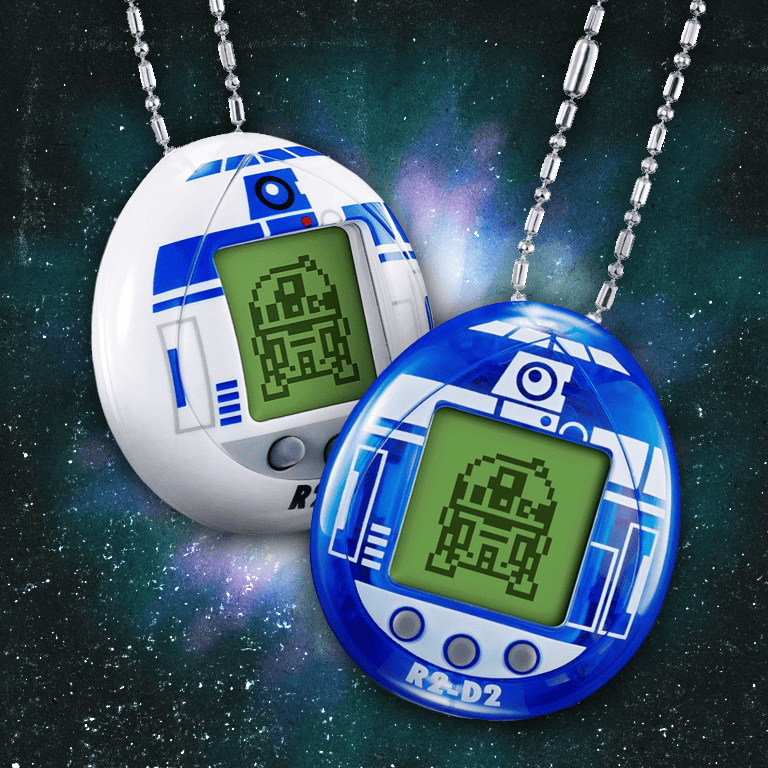
R2-D2 is the first licensed Tamagotchi nano to feature a Star Wars character. It’s also the first to have a translucent shell, the first to be released almost simultaneously in Japan and internationally, and the first to have games unlocked through gameplay. This version has more games of any nano, with nine in total.
The BT21 version is a licensed Tamagotchi nano featuring mascot characters created by the famed Korean boy band BTS. One character, Van, even represents their fan base, or “ARMY.” In this Tamagotchi version, users are tasked with caring for BT21 characters like Van and other virtual pets debuting as professional musicians.
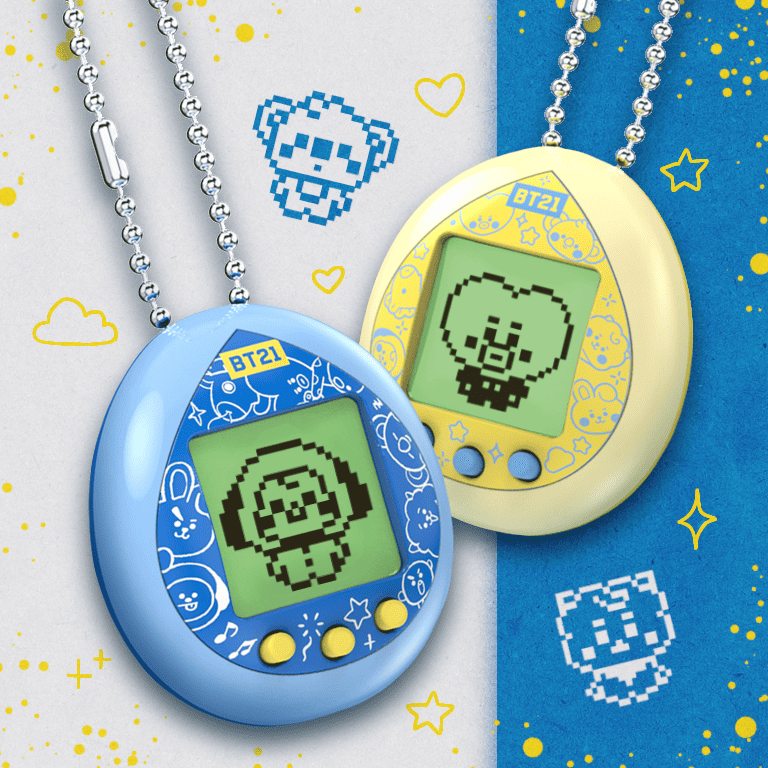
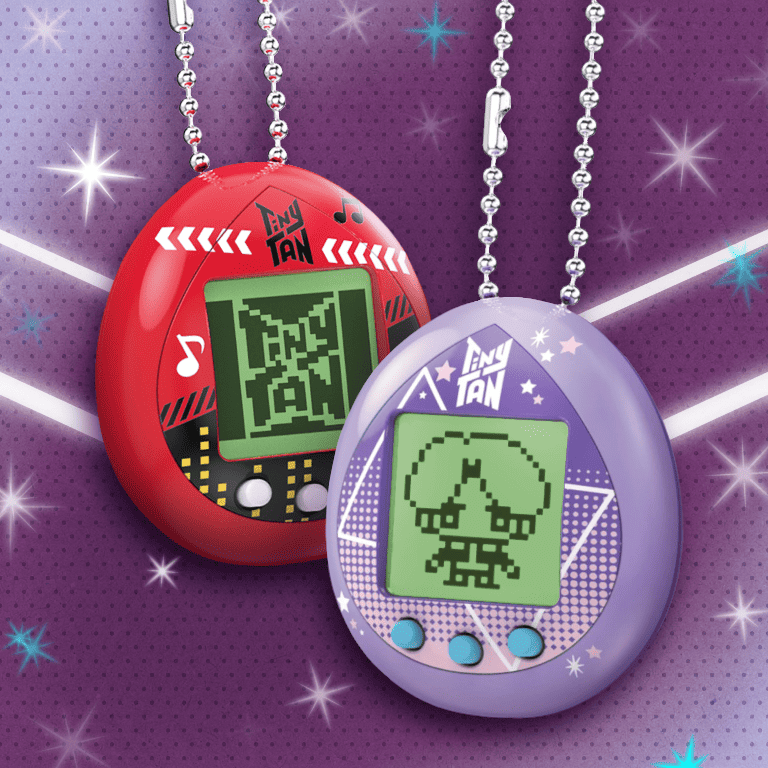
In 2019, Korean boy band BTS released a brand of tiny animated characters modeled after each of the seven band members called “TinyTAN.” Characters enter in and out of a magic door between their world and the real world. Users are tasked with caring for the characters and have access to games like Dance! Dynamite, Egg Tart Making, and TinyTAN character Catch, a Magic Door exclusive.
Toy Story Tamagotchi is a licensed nano that celebrates the franchise’s protagonist, Sheriff Woody. Users can also raise 16 additional characters, including two secret characters. The games and animations recreate scenes from the films, including Jump! Duke Caboom, Fly! Green Soldiers, and Drive! RC. This is the 5th Disney-themed Tamagotchi to be released.
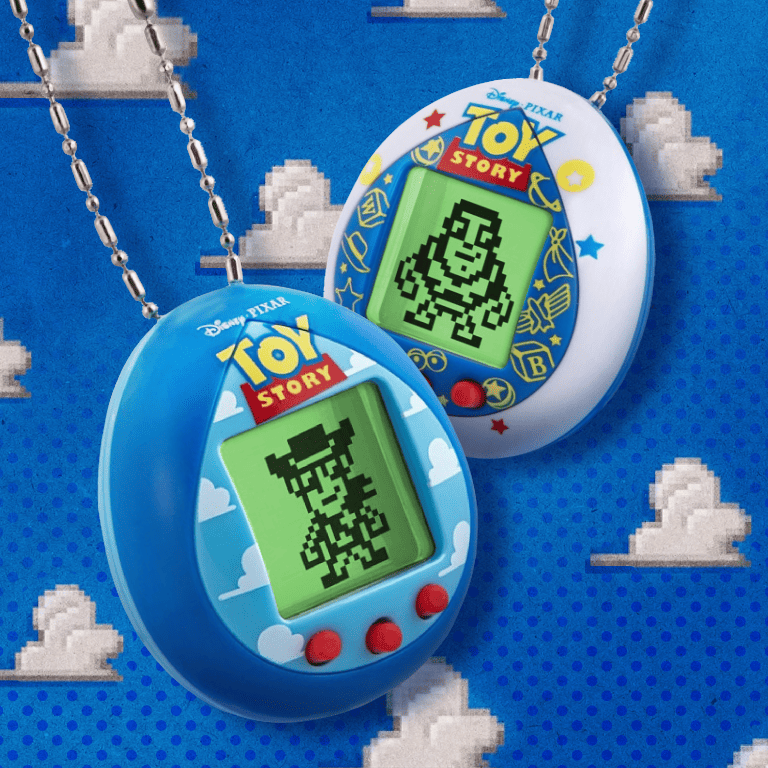
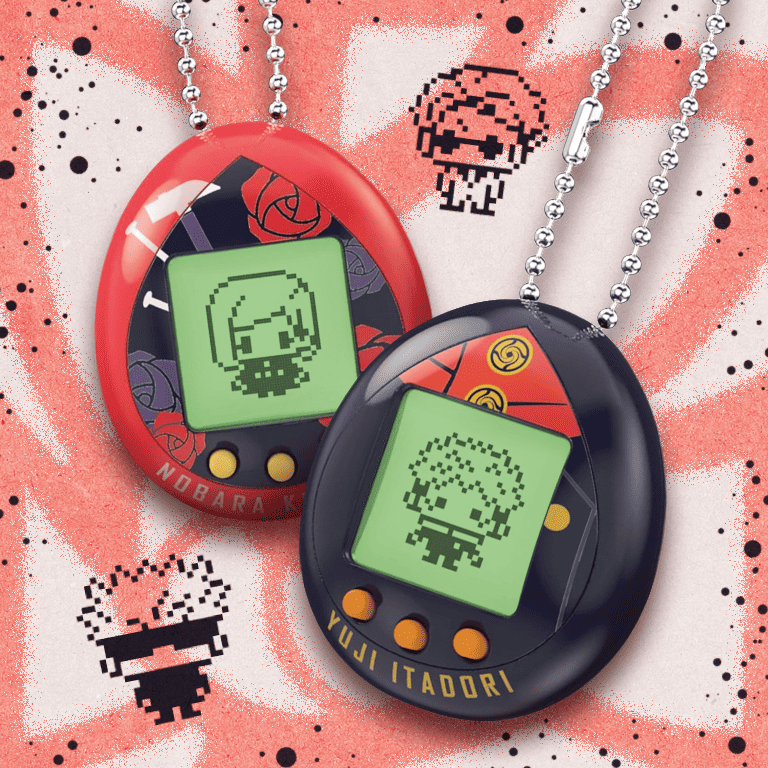
In collab with anime/manga Jujutsu Kaiser, this release was annoyingly delayed in 2021 due to COVID-19 (ugh, what a fever dream that was). The character is a student who evolves based on games played and quality of care. Training games include Put the Curse to Sleep, Finger Catch, and Curse Training. A second version called Jujutsutchi 0 has recently released!
This Tamagotchi was released exclusively at the 2022 San Diego Comic-Con before releasing through the rest of the USA in 2023. Like the famous franchise, Dino DNA is extracted from a mosquito trapped in amber and hatches as a herbivorous or carnivorous baby dinosaur. This is the second nano variant that tasks the user with raising a dinosaur.
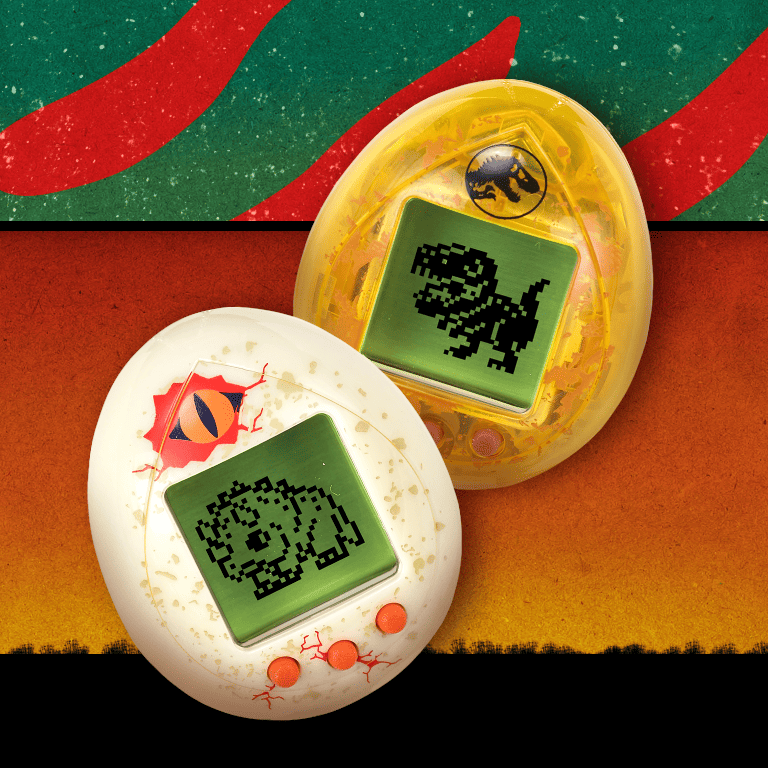
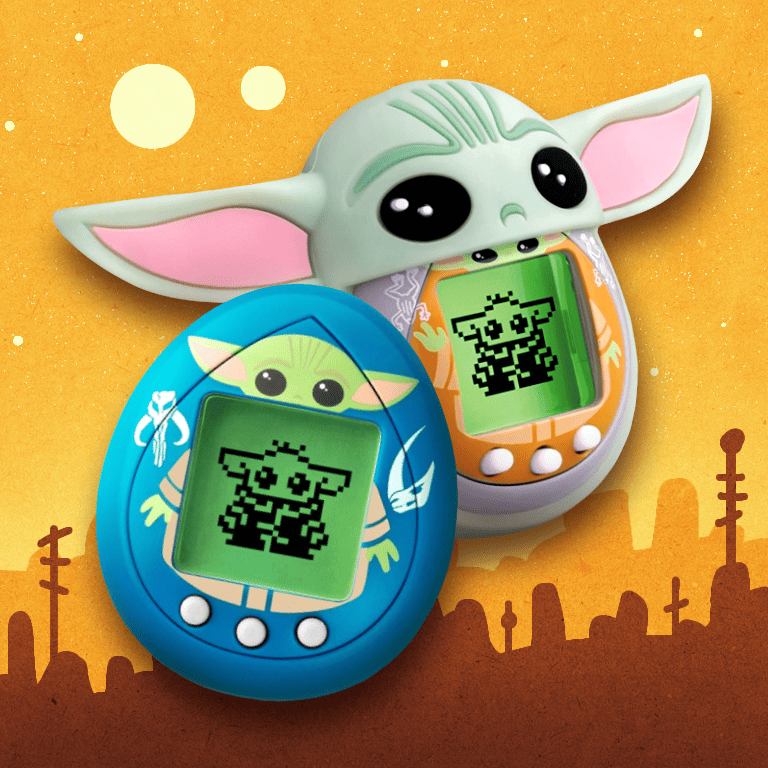
This licensed Tamagotchi nano is based on Star Wars character Grogu (the child!) from The Mandalorian. Users must care for baby Grogu, feeding him and playing mini-games like Frog Catch and Catch the Silver Call. There are ten additional games exclusive to the 12 forms Grogu takes on throughout his life.
Another anime/manga nano, the Spy x Family series follows a spy who puts together a pretend family, including a daughter, Anya Forger, the character in the Tamagotchi. Anya has several outfits inspired by the series and many facial expressions based on her mood. This Tamagotchi character doesn’t die, but she will run away if neglected.
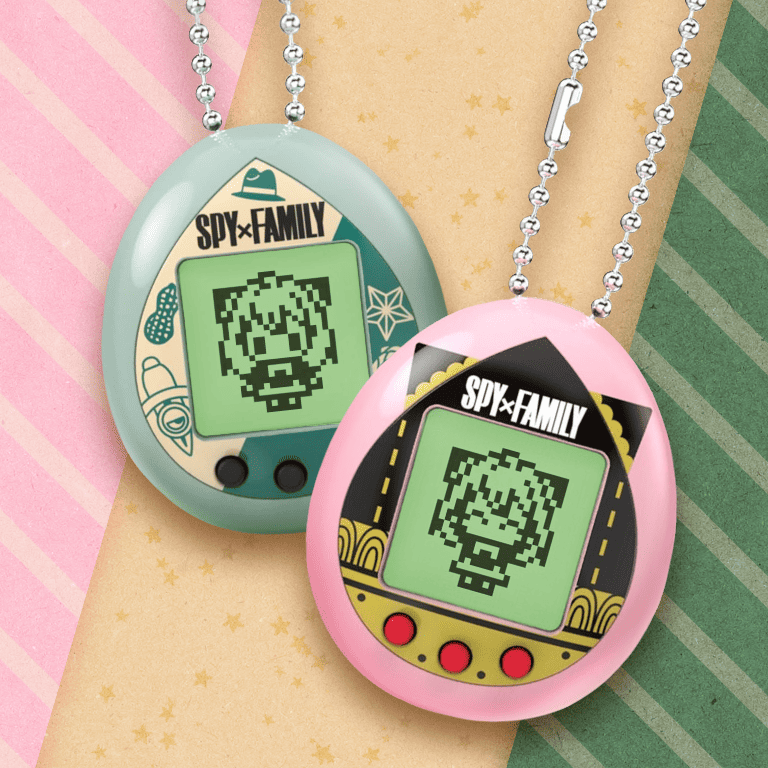
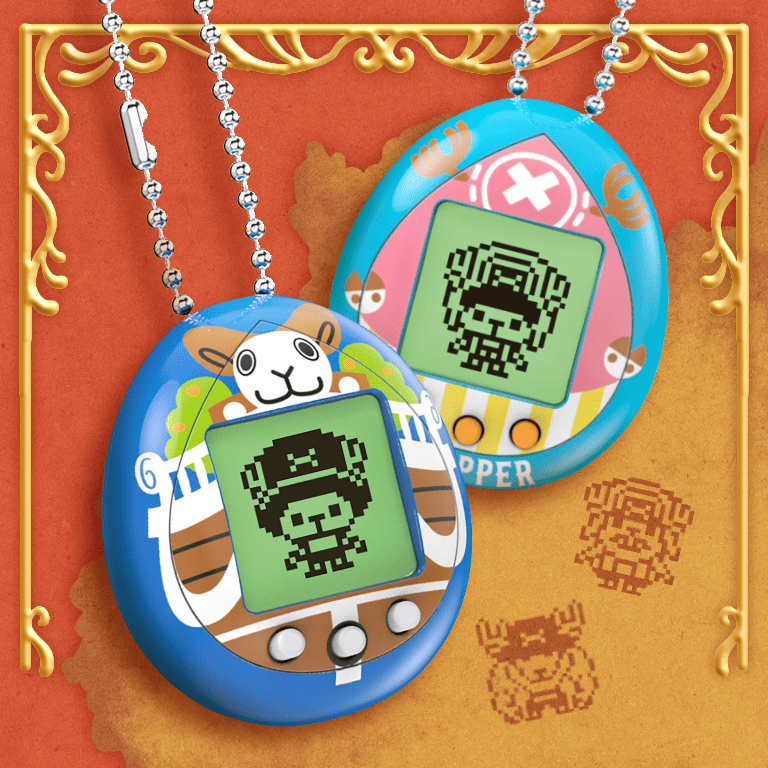
The Choppertchi Tamagotchi Nano pays homage to legendary anime One Piece and released in the US on May 6, 2023. This Tamagotchi will have two shell designs voted on by fans, New World Chopper and Going Merry. It was announced along with the One Piece Tamagotchi Smart set and TamaSma Card to celebrate the 25th anniversary of the series.
In this Tokyo Revengers nano, users care for the series’ protagonist, Takemichi Hanagaki, including playing Motorcycle Race, Crane Game, and Bowling. Throughout the day, delinquents appear on the screen to attack the character, as well as other characters from the series. The Tamagotchi does not die but will run away, leaving a school jacket behind if not properly cared for.
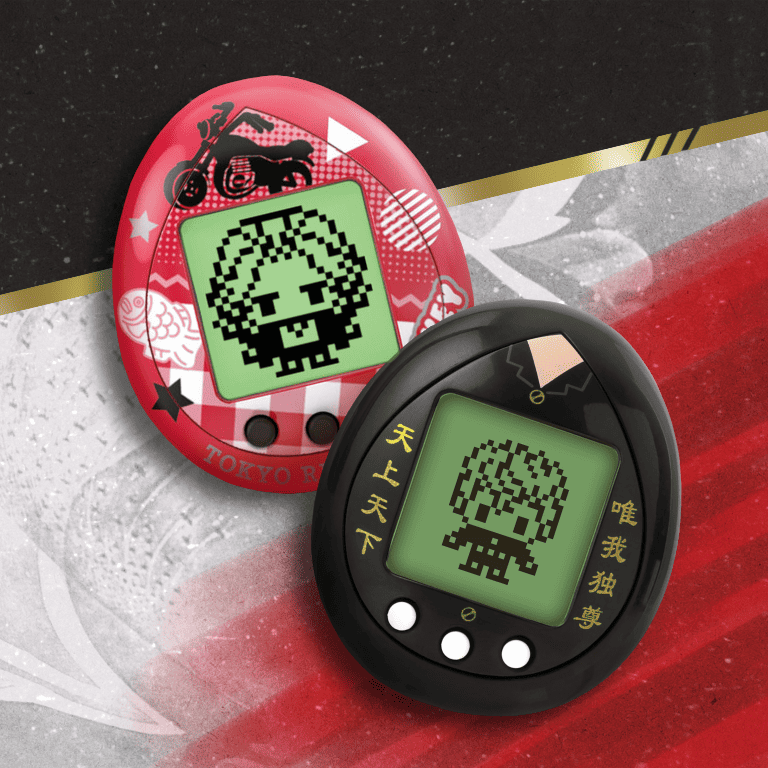
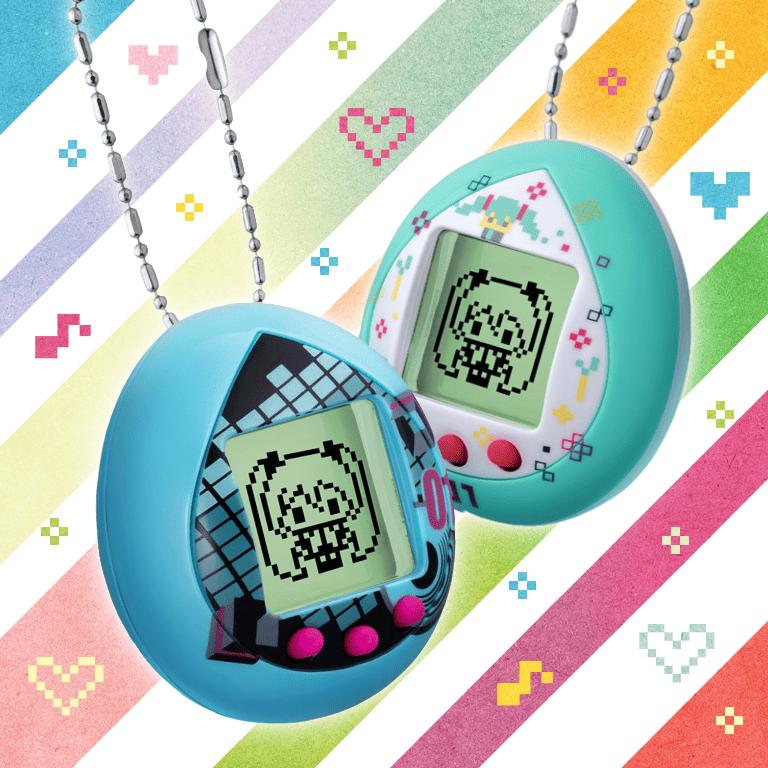
This licensed nano lets users care for the virtual singer Hatsune Mikutchi, a “vocaloid software voicebank”. As she evolves, her costumes from Magical Mirai concerts change too. With music-themed mini-games like Vocal Lesson, Musical Note Catch, and Stage Challenge, you’ll have a tuneful time taking care of this virtual idol.
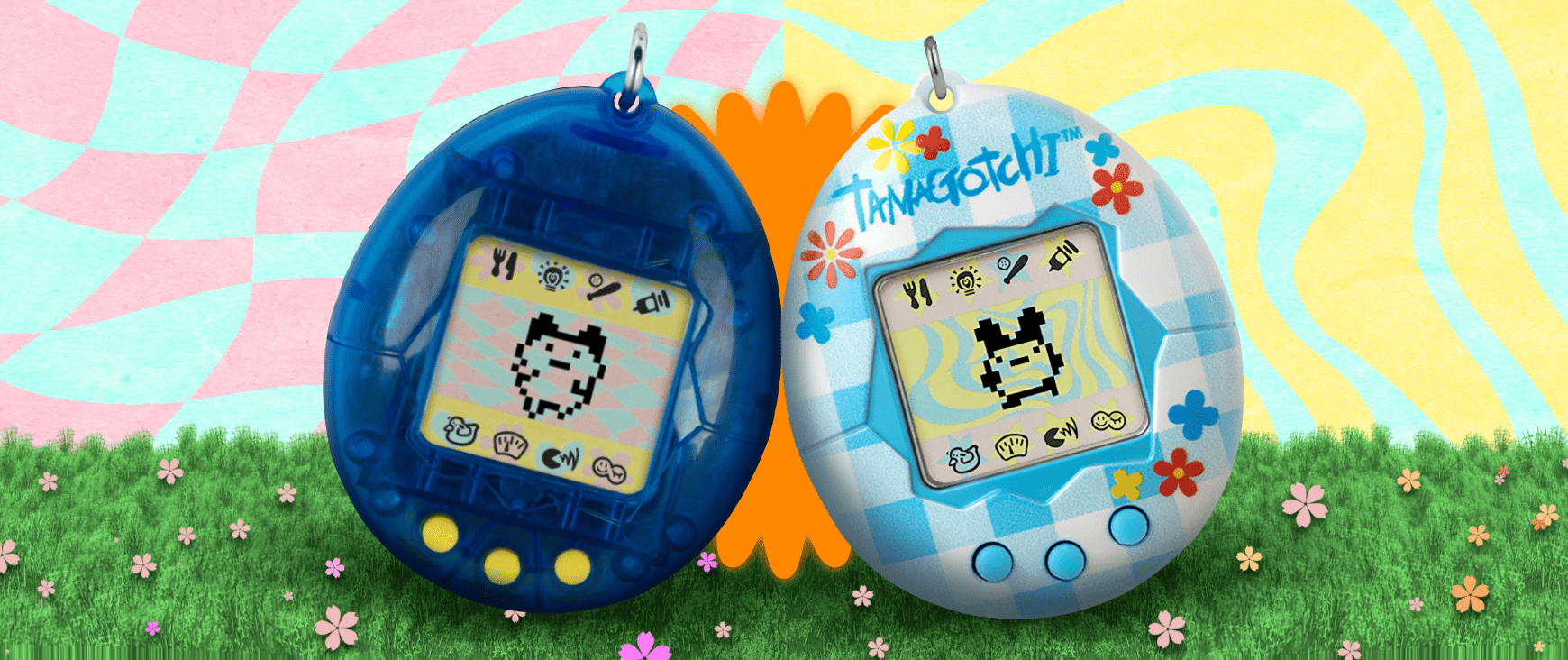
This may come as a surprise, but there are actually quite a few differences between Tamagotchi Gen 1 and 2. The design of the character egg, the food, the medication icon, and the display screen of the Tamagotchi toy are all slightly different or improved.
At first glance, you may not notice much change since all first and second-generation Tamagotchis have the same egg-shape design, stand 5 centimeters tall, and feature a small LCD screen with three buttons below. However, one of the notable differences is that Gen 1 doesn’t have “Tamagotchi” on the egg above the LCD screen, while Gen 2 does (because it’s always useful to have the name of your product somewhere visible).
The background print also clues you into which generation you have. Gen 1 has a blue and pink checkerboard background design with yellow icon rows at the top and bottom of the screen, overlaid with blue hearts and print splats. Just to be edgy, Gen 2 has a blue and yellow ripple background design with pink icon rows overlayed with yellow and blue stars. The character egg on the display screen looks slightly different between both versions, with Gen 1 being a black egg with white dots and Gen 2 having more of a checkerboard design.
The battery compartment also gives away which version you have. The original battery compartment is small with two screws, and re-releases are larger with one screw and lip to keep the batteries in place. Original Tamagotchi releases also have a battery warning sticker as opposed to a waste disposal warning that’s molded onto the re-releases.
Did you think Gen-1 and Gen-2 Tamas ate the same stuff? Think again!
In Gen 1, Tamas can eat bread or a piece of candy. In Gen 2, they can eat a hamburger or cake. Crazy, right?
Gen 1 shows the words “meal” or “snack” when making selections on the food screen, whereas Gen 2 shows the actual food. As far as the medication icon, the Gen 1 medication icon is a needle, while the Gen 2 medication icon is a spoon and bottle (so if you’re squeamish about needles, Gen 2 is for you).
What about the games, you ask? Well, Gen 1’s game was all about guessing which direction your Tama would turn. Guessing correctly three or more times meant you won the game.
Gen 2 is similar in that it’s about guessing whether the number your Tama is thinking of is higher or lower than the one displayed. Again, this is a best of five rounds game.
However, Gen 2’s game has a health-related twist. The number you are guessing is actually tied to your Tama’s weight; if you guess correctly, you’ll get a happy heart. If not, your Tama will still lose weight, but you can kiss that heart goodbye.
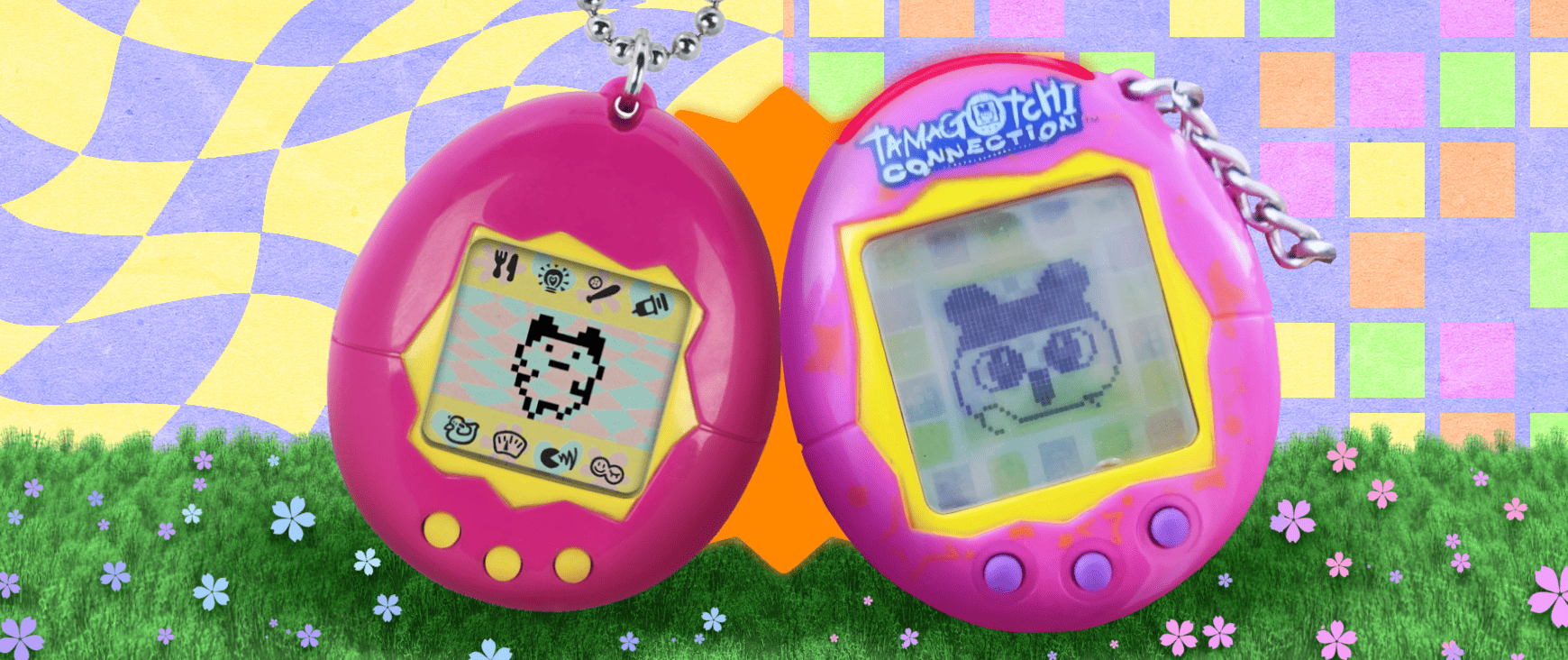
About seven years passed between the original Tamagotchi Gen 1/Gen 2 and the release of the Tamagotchi Connection v1. Well, a lot can change in that time. The Tamagotchi Connection v1 (TC v1) was the first release to use Tamacom, which allows two virtual pets to connect and play games, exchange presents, and make babies. All the original Tama characters are the same, with several new additions.
TC v1 has a larger shell than the originals and a larger screen, but with smaller pixels (resolution: 32 x 30). You can see an infrared port across the top of the shell and the classic keychain hole on the right. Though the LCD screen is the same as the original Tamagotchi, the background prints can vary depending on the shells.
TC v1 has two more functions than the classic: Communication and Friends List. The TC v1 has several screens with a different Meter icon layout than the classic. The Hungry and Happy heart meters are on the first screen, the second screen displays the Training meter, the third screen shows Age, Weight, and Name, and the final screen shows Gender and Generation.
The food on the original Tamagotchi and the TC v1 are relatively similar, except that the food choices change as the virtual pet grows in v1, supplying each adult character with their distinct foods. Regarding waste, v1 allows you to catch the Tamagotchi before it uses the bathroom on the floor using the toilet icon, though it is excluded in certain phases. Discipline methods have been expanded from the classic Tamagotchi to include Praise, which can be used when the Tamagotchi is crying or sulking.
The TC v1 is the first to have multiple games and can restrict games if the Tamagotchi is at base weight. There is a game where the Tamagotchi copies dance moves and one where it jumps hurdles. Each game has a ranking system, and each player must complete a certain number of rounds to fill a Happy heart.
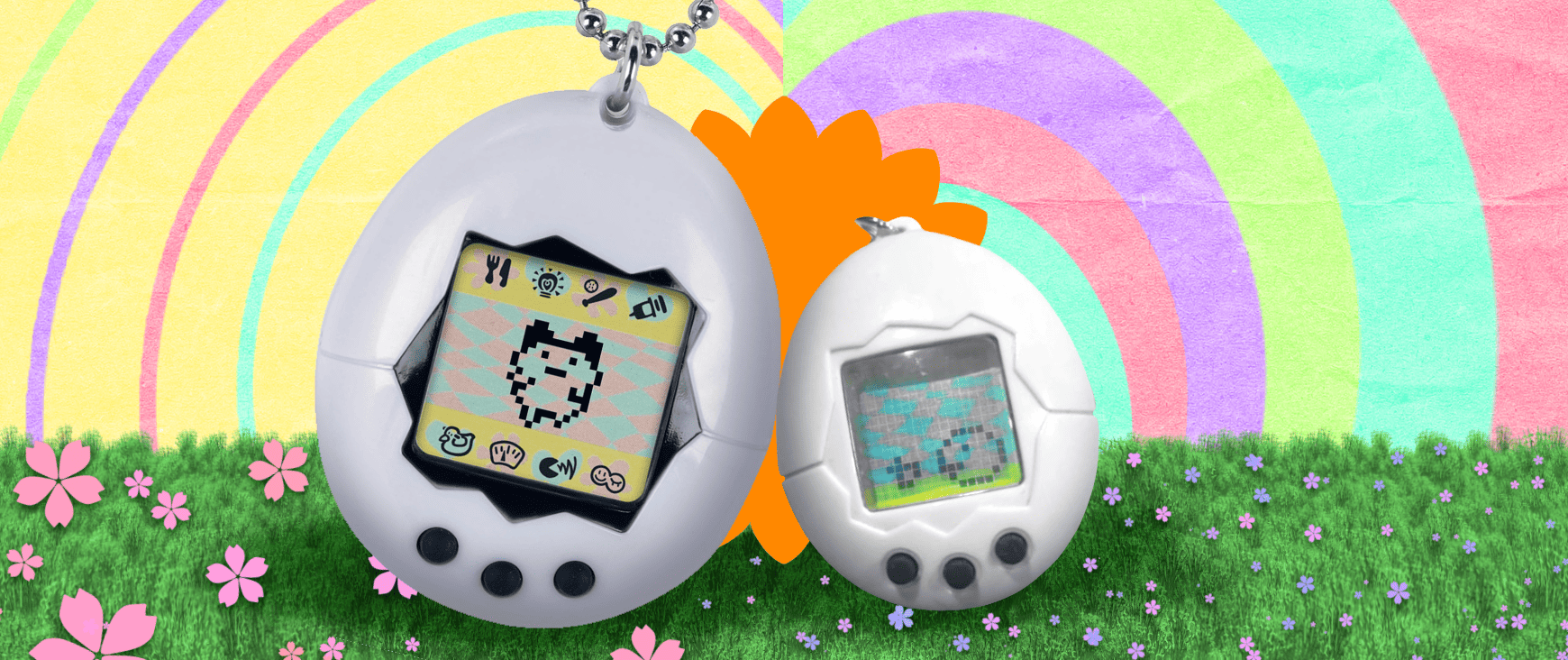
The Tamagotchi mini is a homage to the original Tamagotchi, but due to its small size, was treated more like an accessory. The primary differences are in the design, having a different meal option, a secret character Ginjirotchi, an additional idle animation, and a new death animation (because the kids needed that!)
As the name suggests, the Tamagotchi Mini is the smallest virtual pet in the entire franchise, coming in at 1.57 inches tall with a screen that’s only 16 pixels tall and 16 pixels wide (resolution: 32 x 16). Though the Mini has a printed background like the previous versions, it has no icons.
Buttons A and C became context-sensitive, with Button A as the “Functions” and Button C as the “Check Meter.” When you press the “A” button, a function will be executed if the Mini needs anything, with certain functions being prioritized. The rank of functions is cleaning poop, sickness, and feeding. Pressing this button when the Tamagotchi character is asleep will display the lights menu to turn them on or off. Pressing the “C” function will trigger an animation indicating the Mini’s needs.
You can combine the Mini’s buttons to activate certain settings. The “A” and “C” together will allow you to change the time, pause the Mini, and turn off the Tamagotchi sound. Pressing the “A” button when the Happy or Heart meter is low or empty will bring up the necessary menu. In this version, the food is a bagel for the meal or a piece of candy as a snack, similar to Tamagotchi Gen 1.
In the English version, when the pet dies, the Tamagotchi is shown being lifted into a UFO and taken back to its native planet. Death can happen at about age 15 or sooner if sick or neglected for 24 hours. At the screen where the Tamagotchi is taken away, you can press the “A” and “C” buttons together, and a new egg will appear.
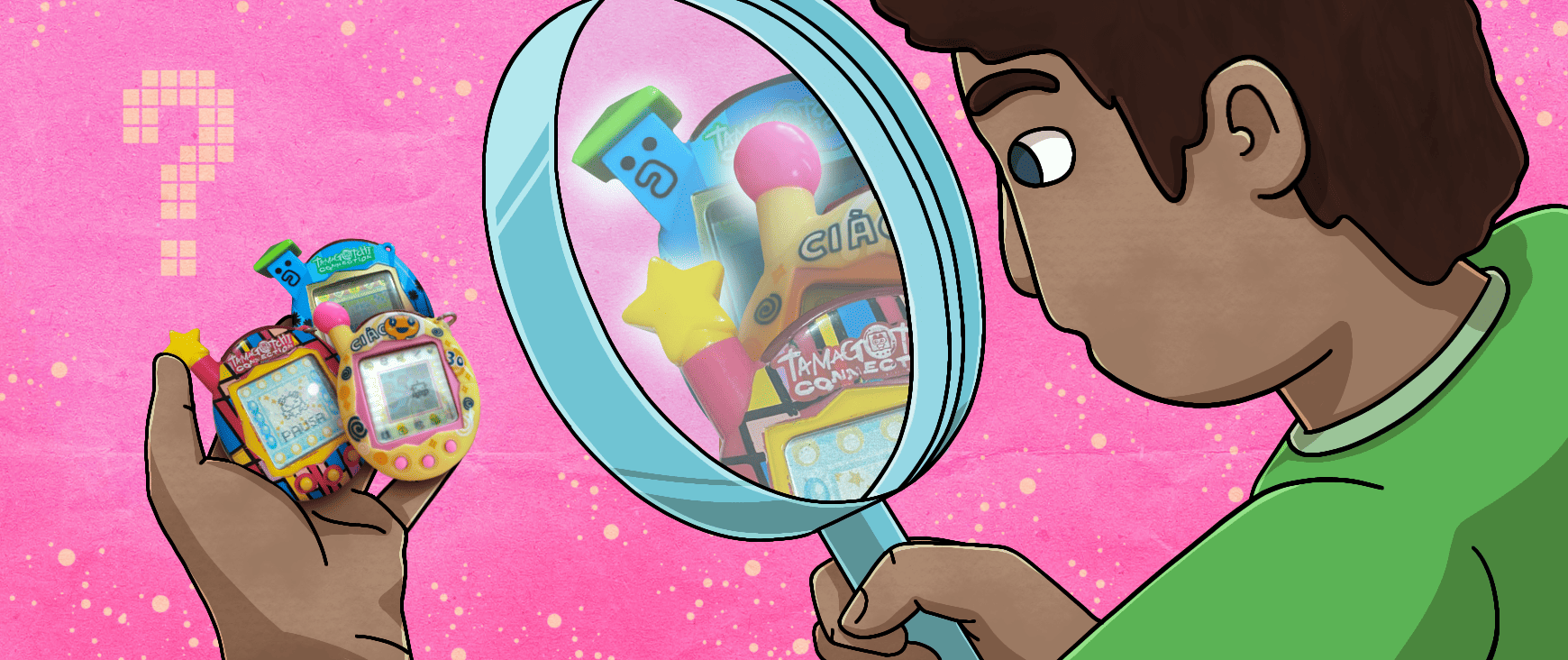
We’ve already addressed some distinctions between Tamagotchi Gen 1 and Gen 2 that will help you identify which one you have and distinguish it from the re-release versions. Obviously, Tamagotchi Minis can be identified by their size, while collaboration Tamagotchis are identifiable by their characters, like PAC-Man, Hello Kitty, or Tamagotchi meets Eevee.
While most Tamagotchis are identifiable with their packaging, some are sold without the original packaging. For some of the modern releases, it might be more challenging to tell them apart, so here is a cheat sheet:
Other Tamagotchis not listed above are easily identified by their special version shells. For example, the Tamagotchi Angel has angel wings on the shell (no kidding), while the Tamagotchi Ocean has the title written at the top of the shell. When in doubt, let this article be your guide!
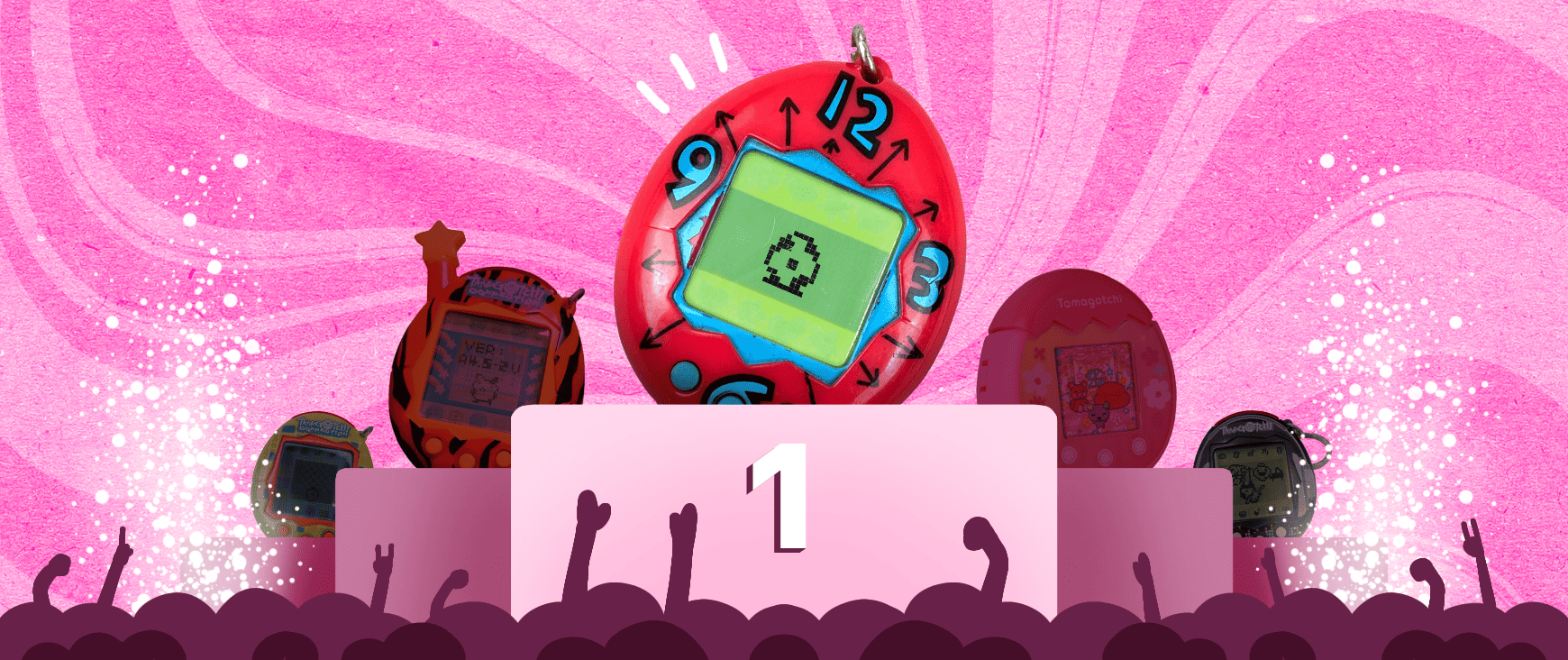
No Tama release has lived up to the craze the first Tamagotchi toy stirred up when it was first released worldwide in ’96. Since their debut, these virtual pets have sold over 85 million units, with 10 million sold in the first year alone, making it the most popular version in the Tamagotchi franchise.
Awesome! Now, What’s Next for Tamagotchi?
Well, if an official announcement on the very first day of the New York Toy Fair is to be believed, Tamagotchi is gearing up for its biggest year yet. New Tamas, a tour across America, and all kinds of interactive activities are lined up for Summer 2025. No doubt this will revitalize the brand once more, and get a whole new generation just as obsessed as we were all those years ago.
For more Tamagotchi news, collectibles, and all things 90s, you can follow Rediscover 90s Toys on Instagram, Pinterest, and all our other social media pages.
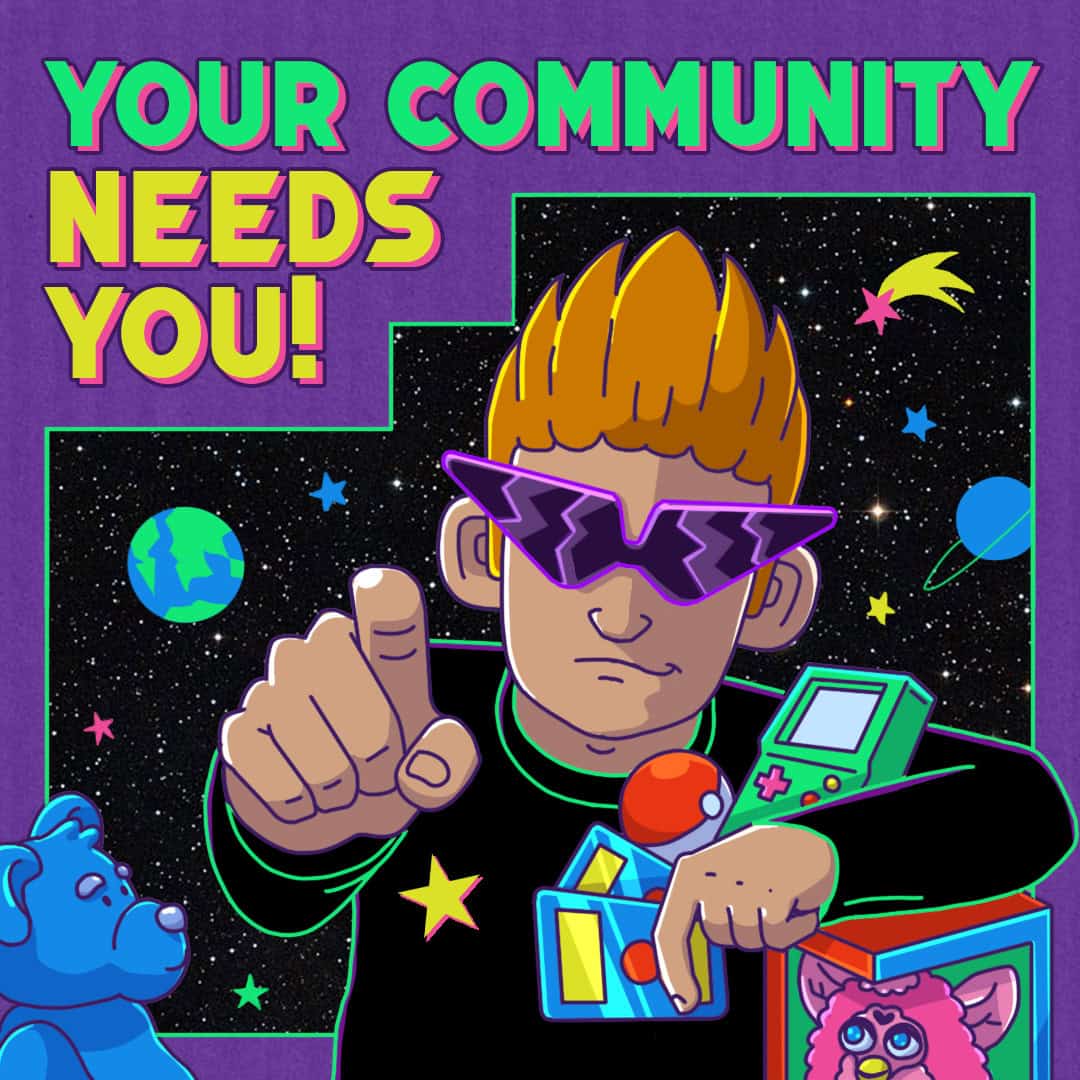
Lee is curator of nostalgia and a long-time collector of loveable junk. An 80s baby, 90s kid, he knows he had it good when it came to Saturday morning cartoons. Spends his life trying to recapture the dopamine hit of playing Game Boy for the first time and believes Beanie Babies will make a fortuitous comeback. Obsessed with everything (and anything) retro, he is your trusted guide to a world of 90s toys, games and collectables.

Check it out!

March 4, 2025
How to Turn Off Tamagotchi Sound for Peace & Quiet

August 31, 2024
Virtual Pet Showdown: Giga Pet Vs. Tamagotchi

March 26, 2025
How to Discipline Your Tamagotchi: Tough Love the Virtual Way